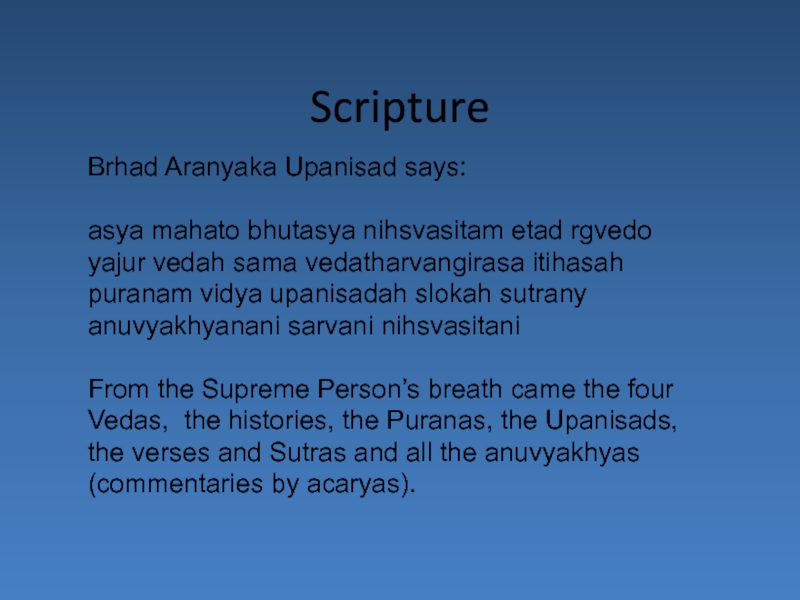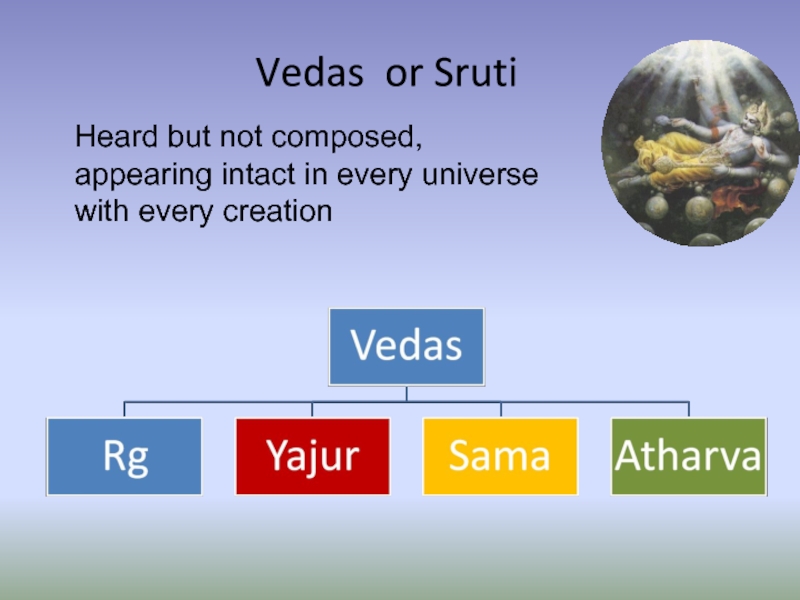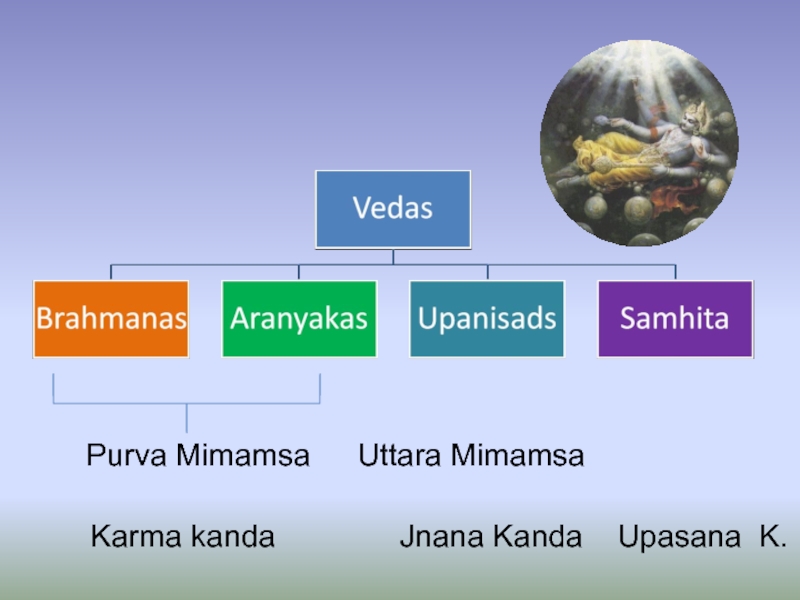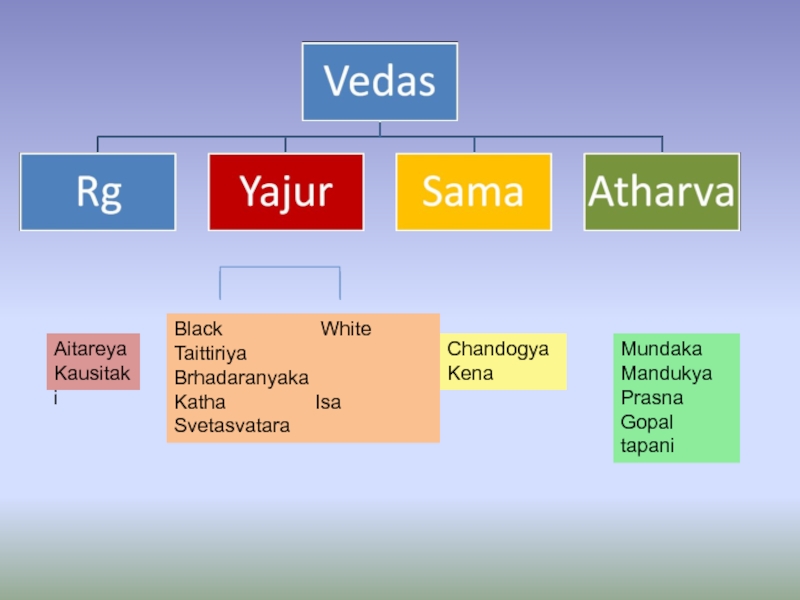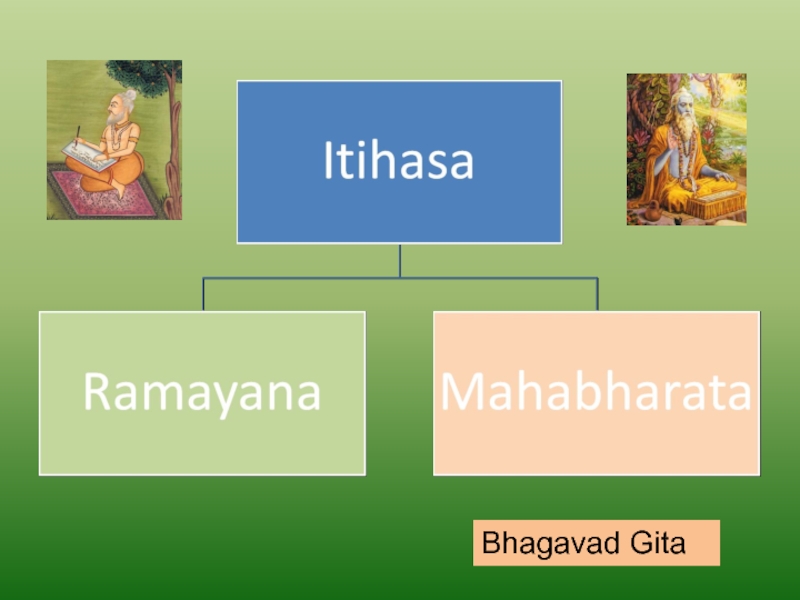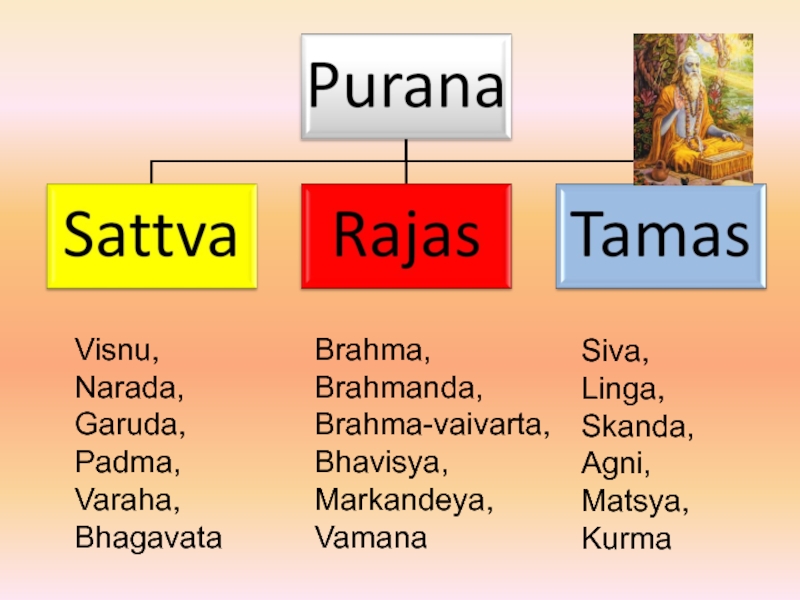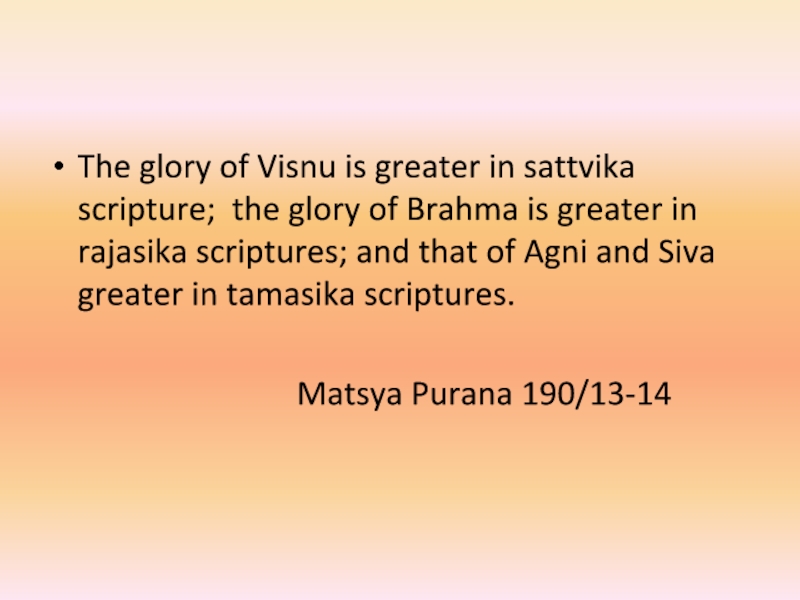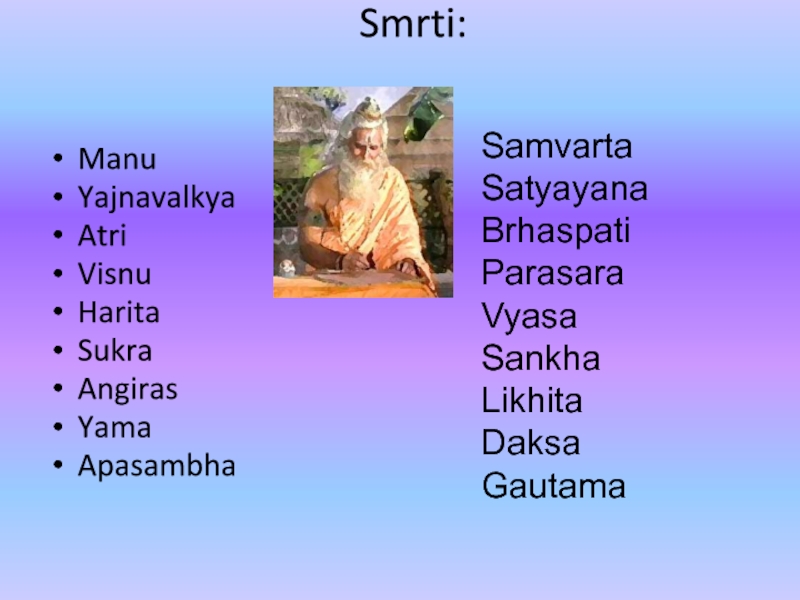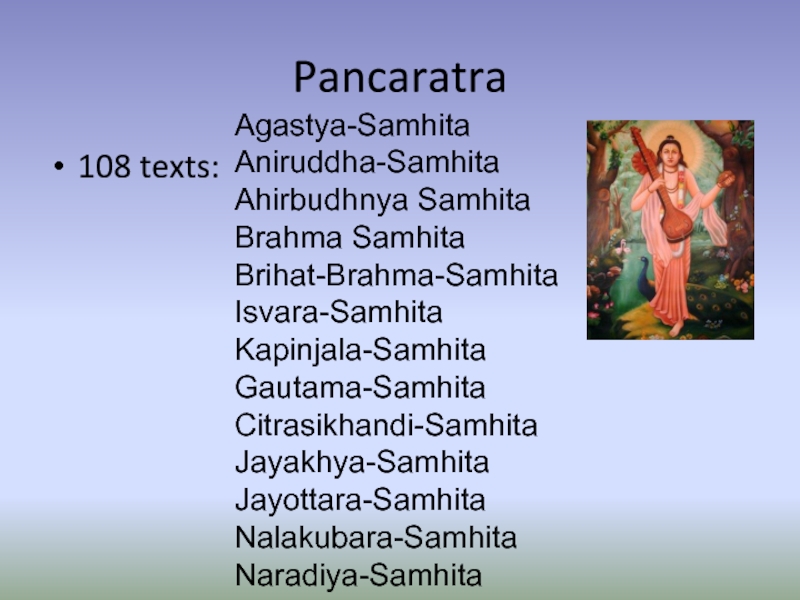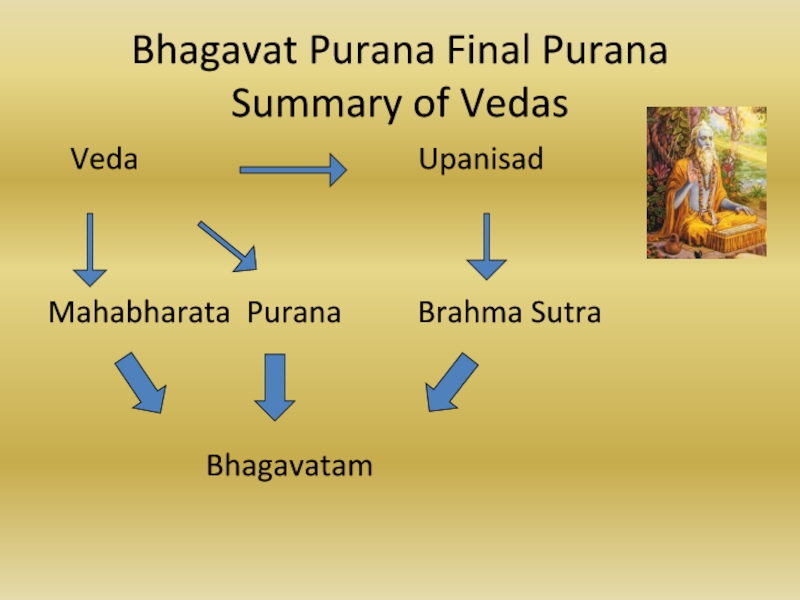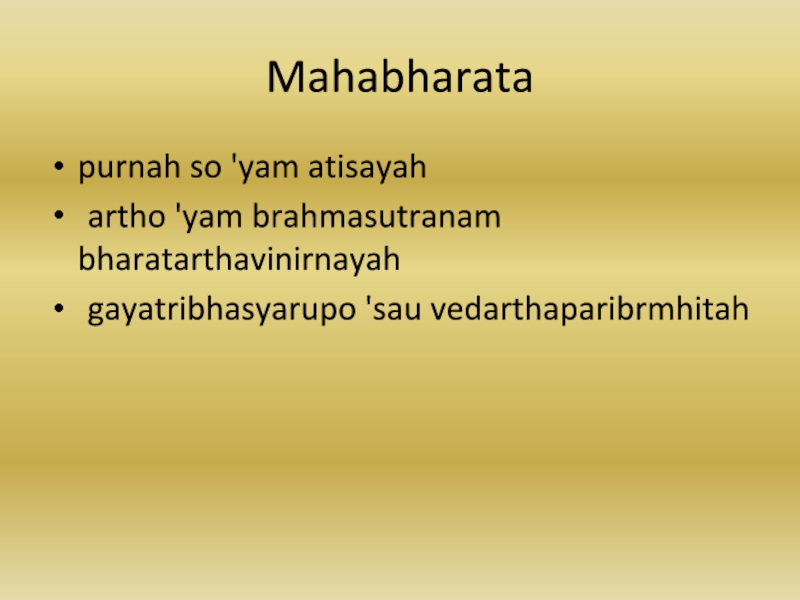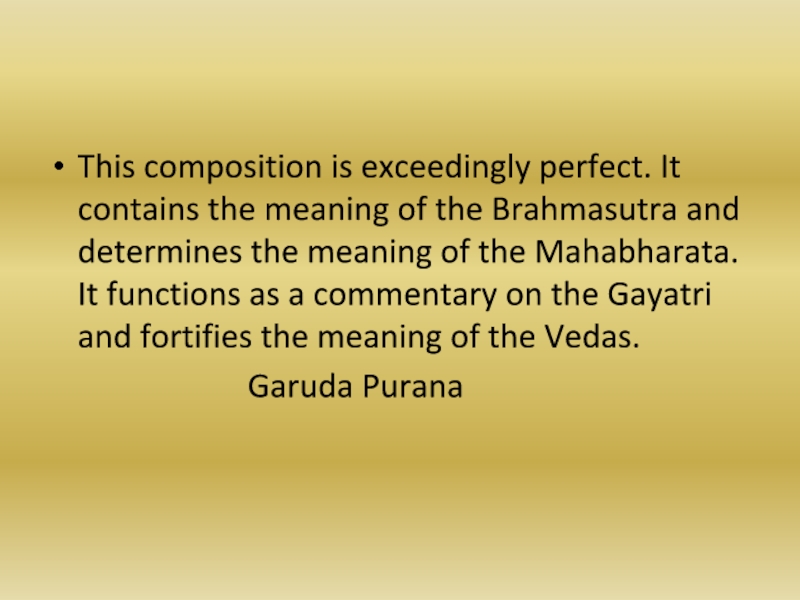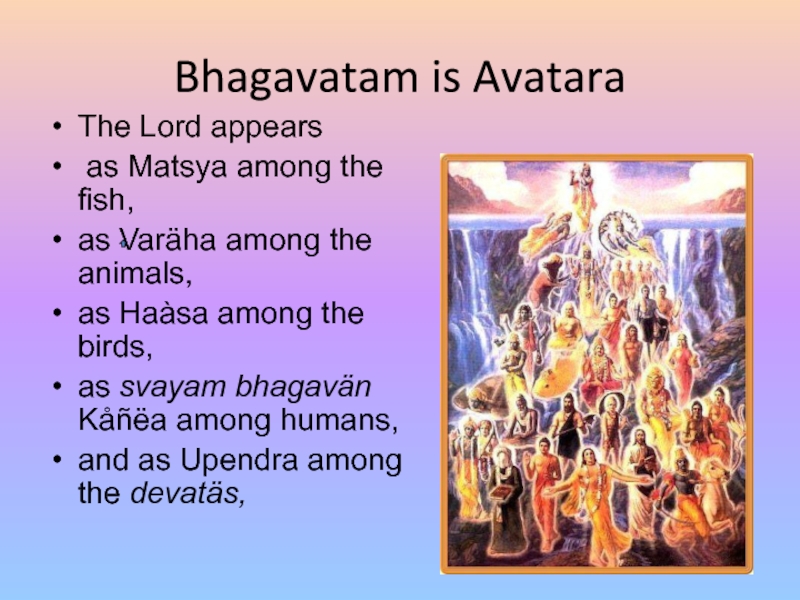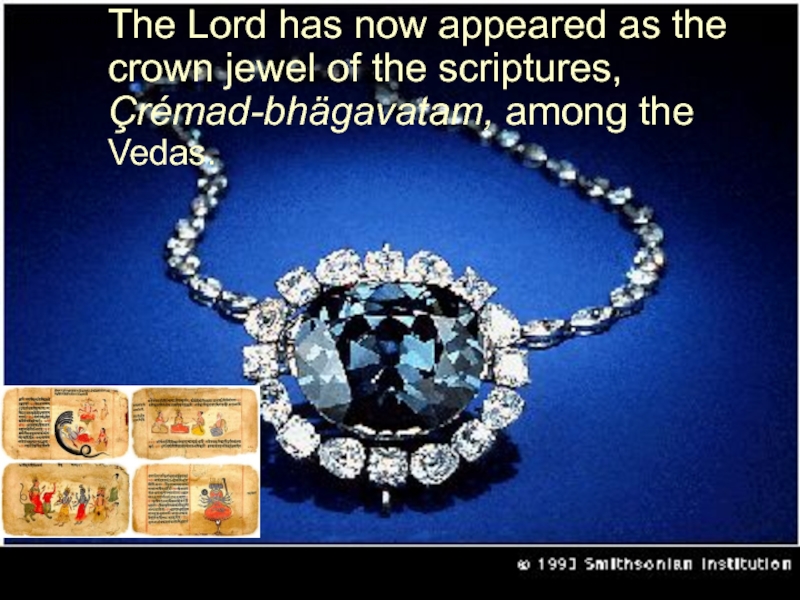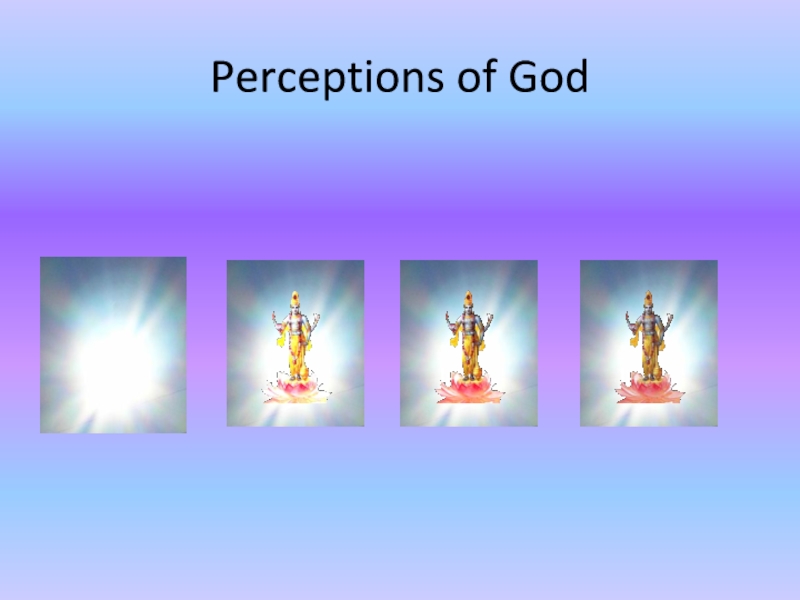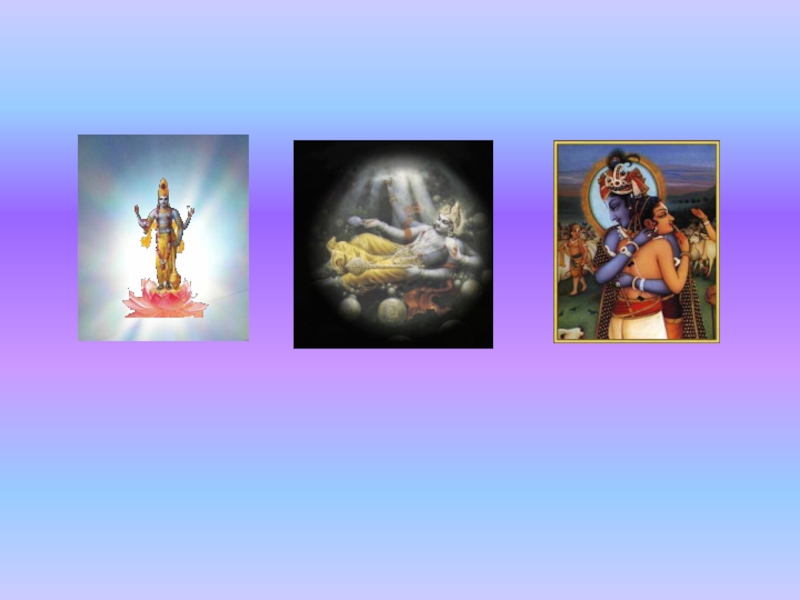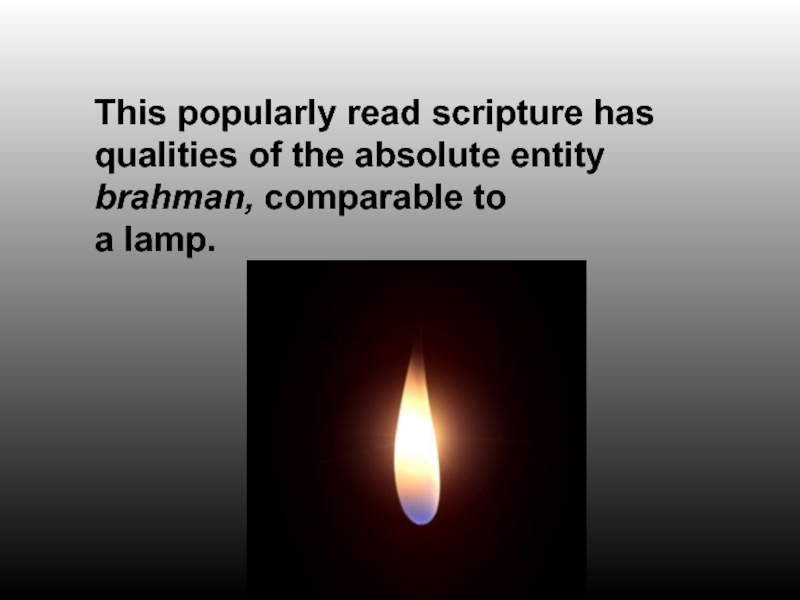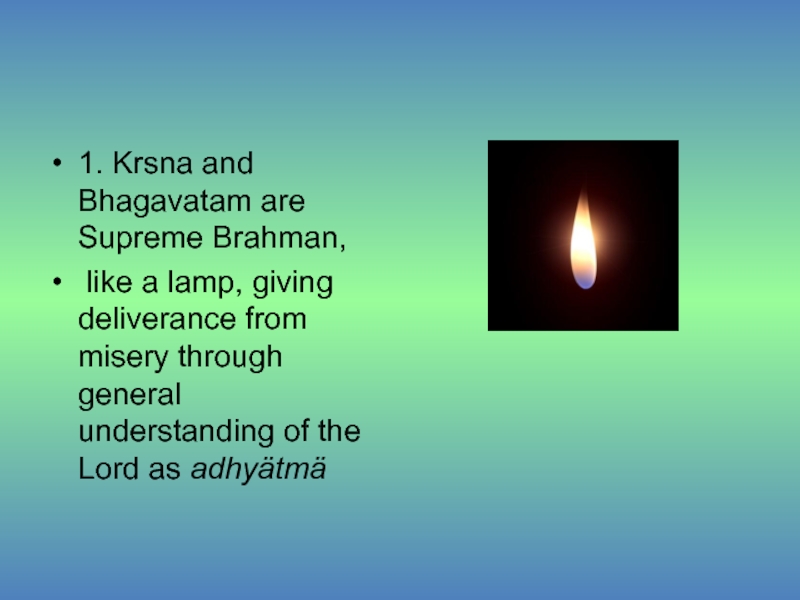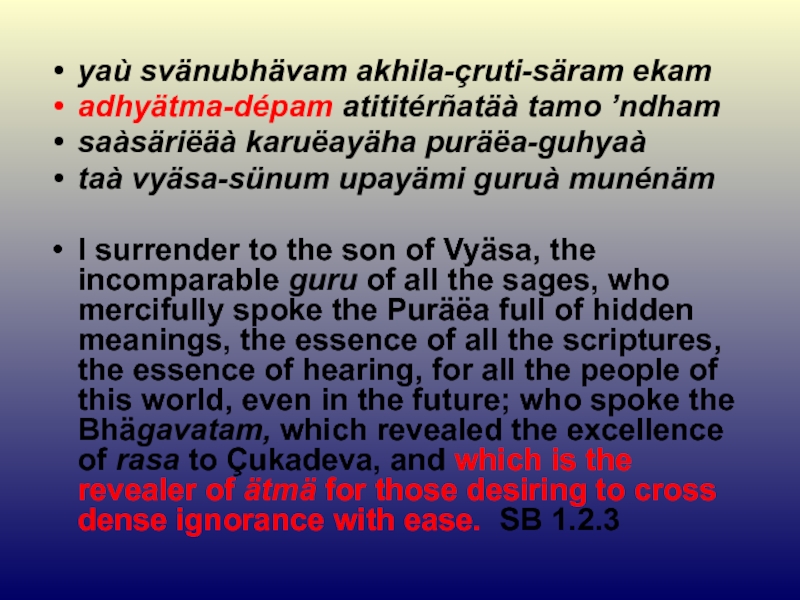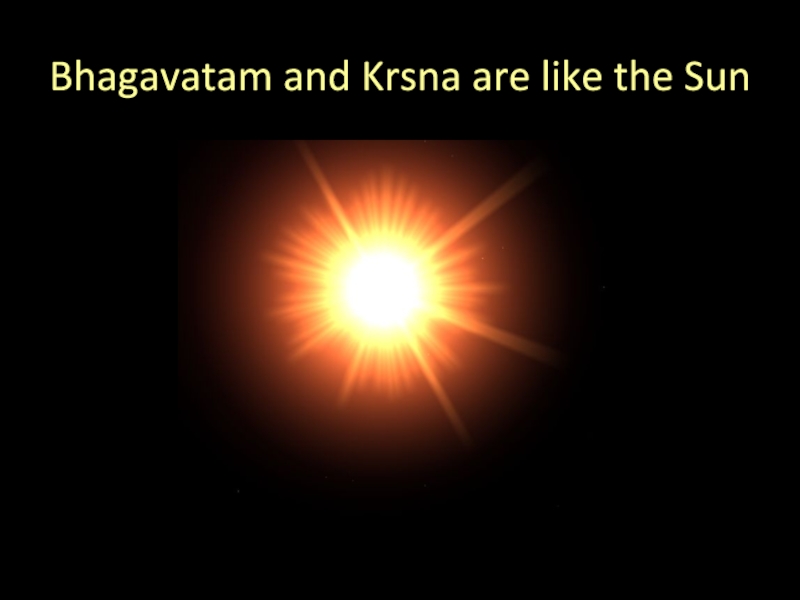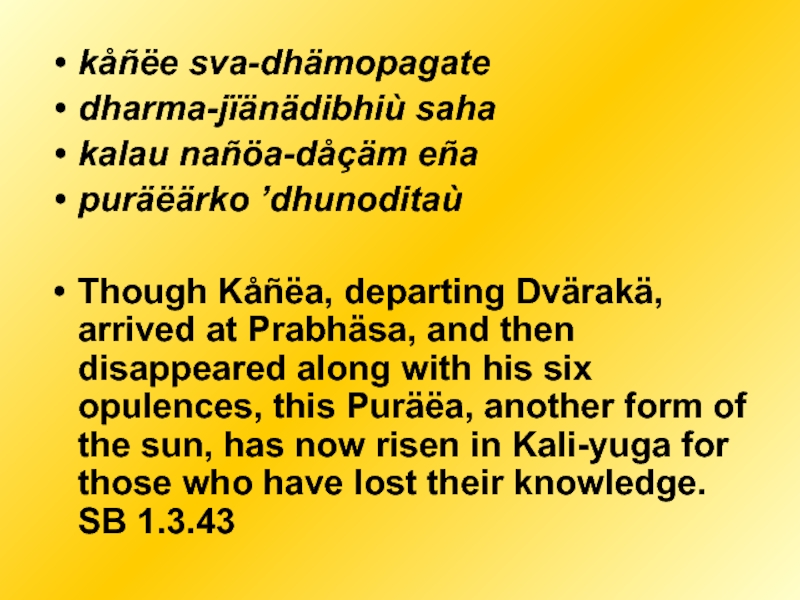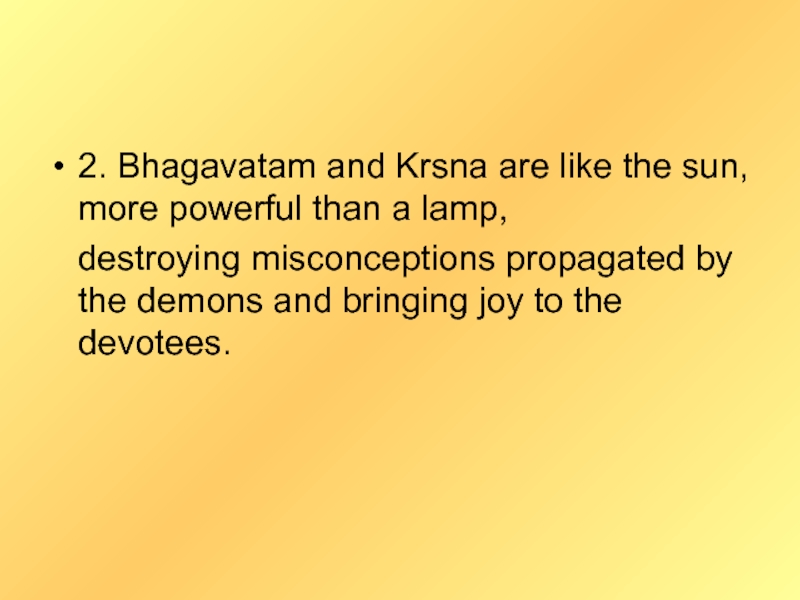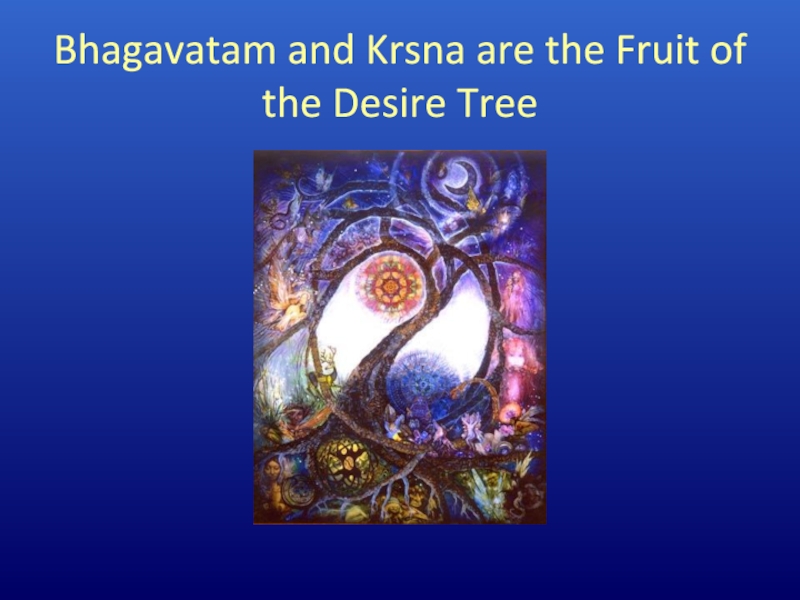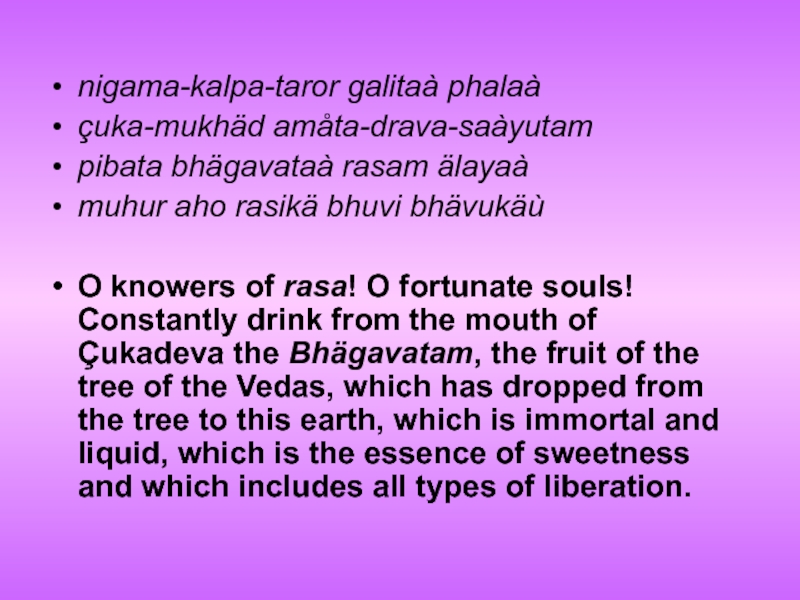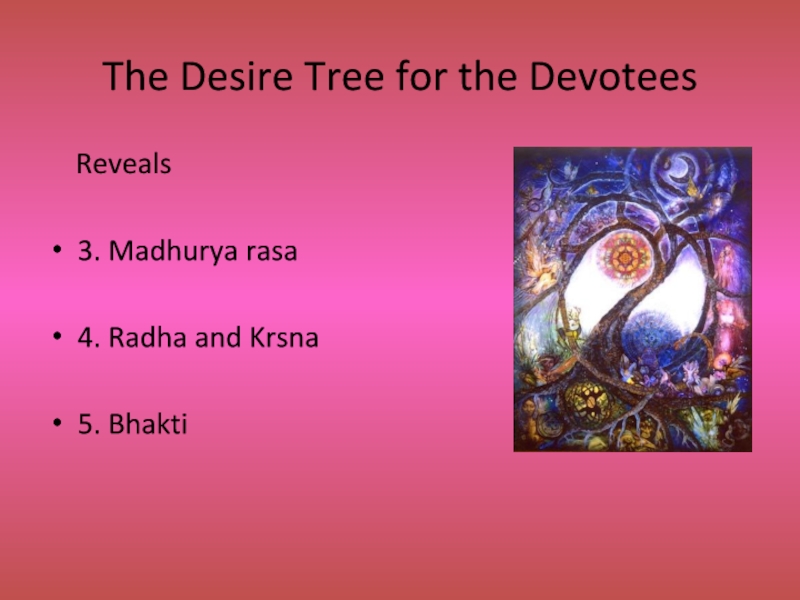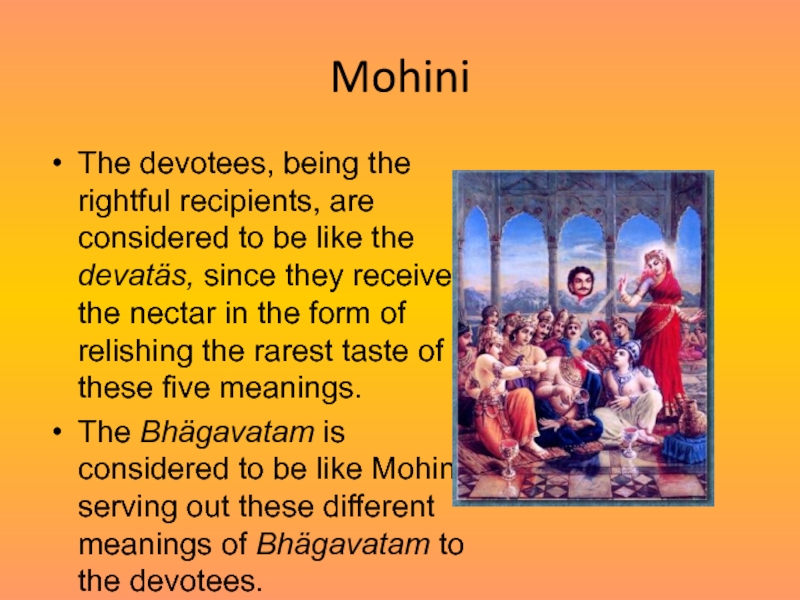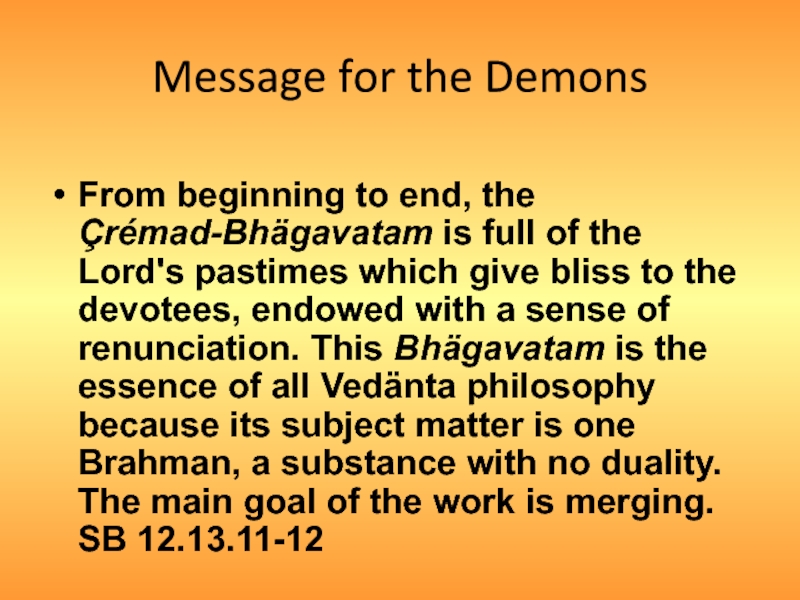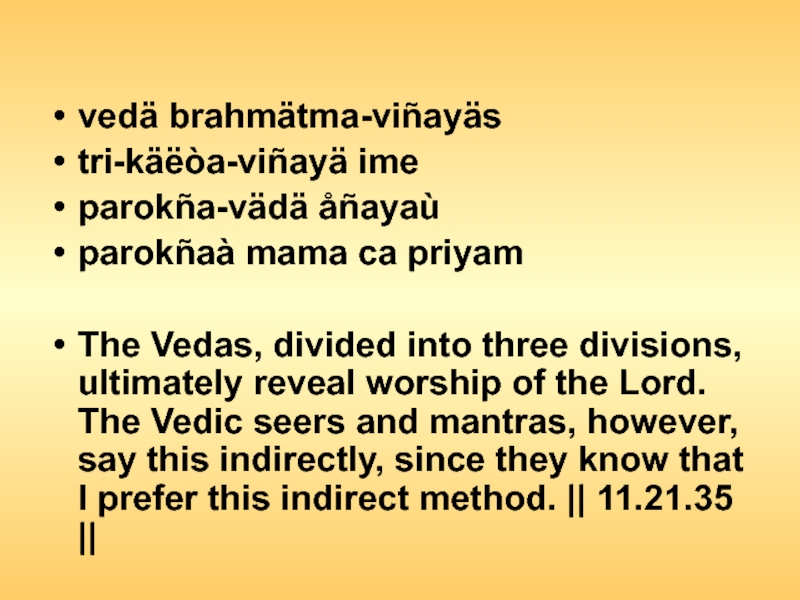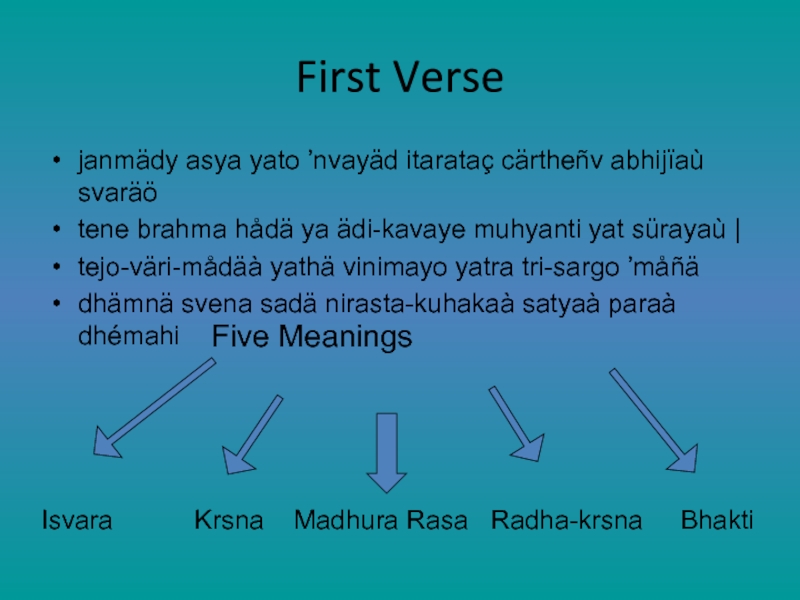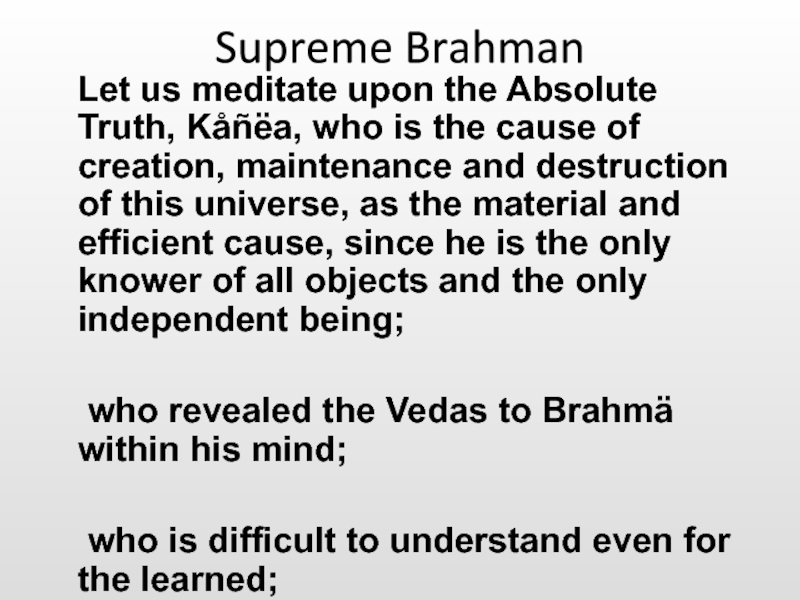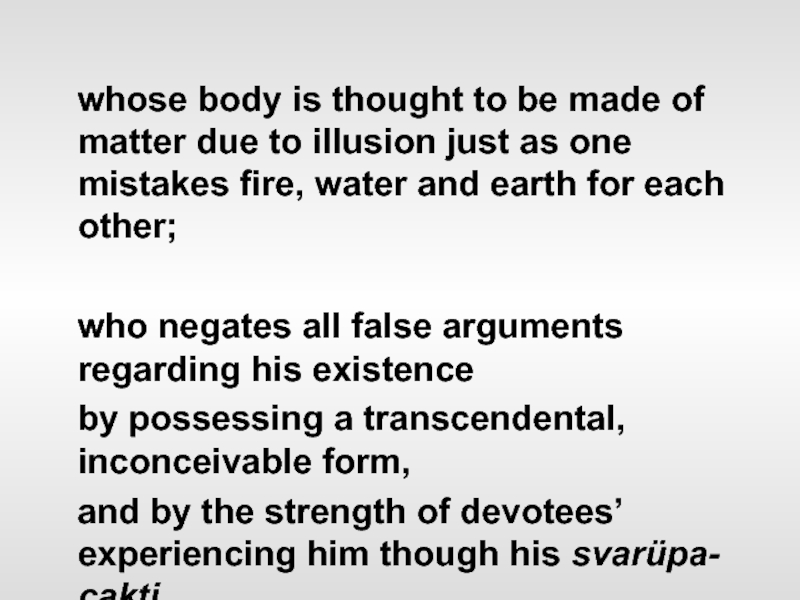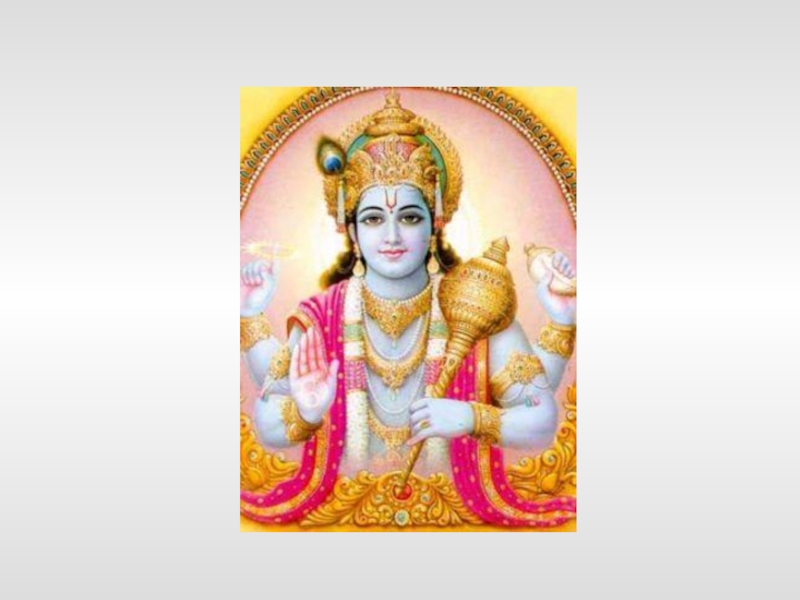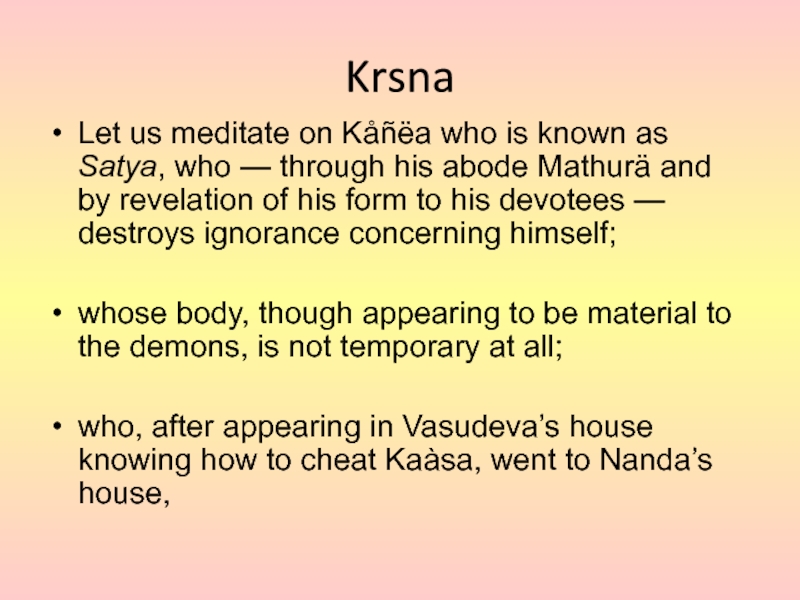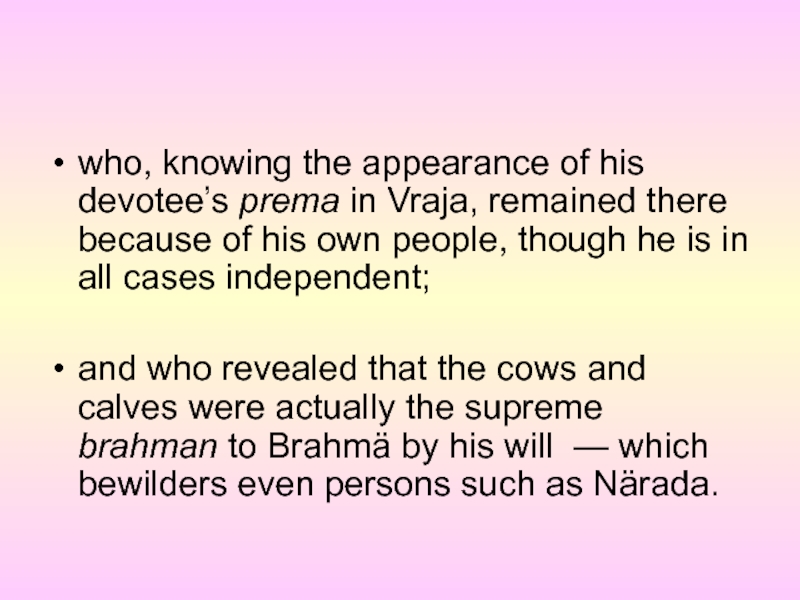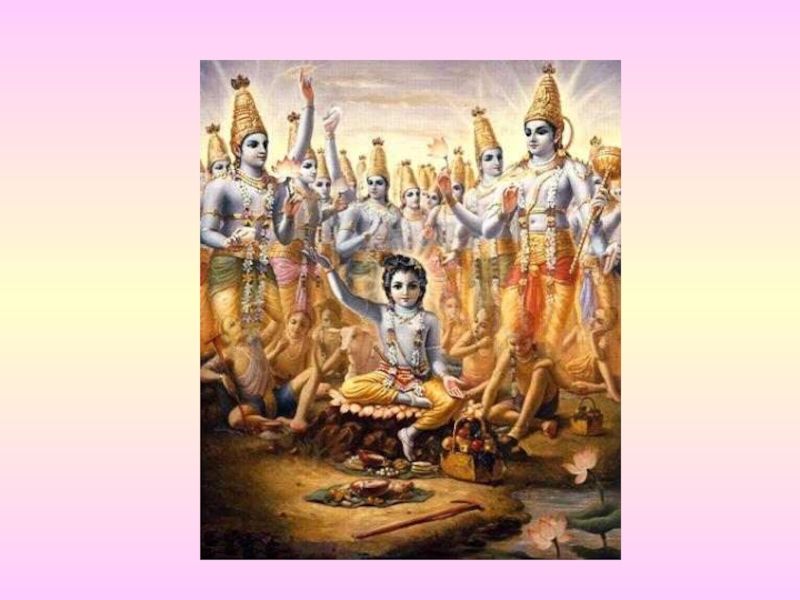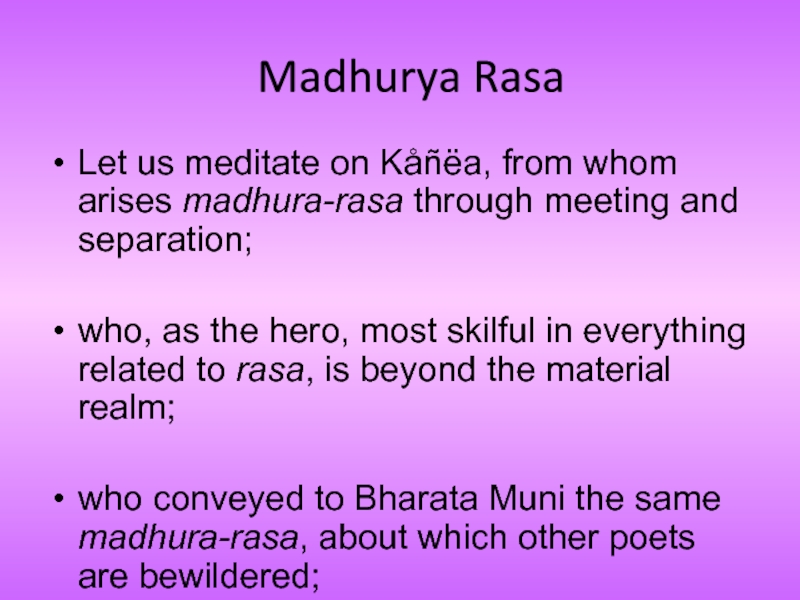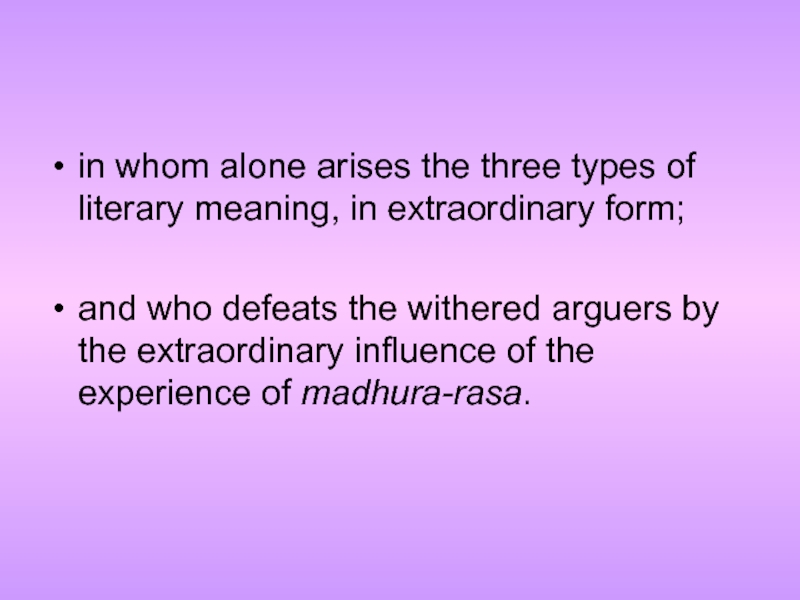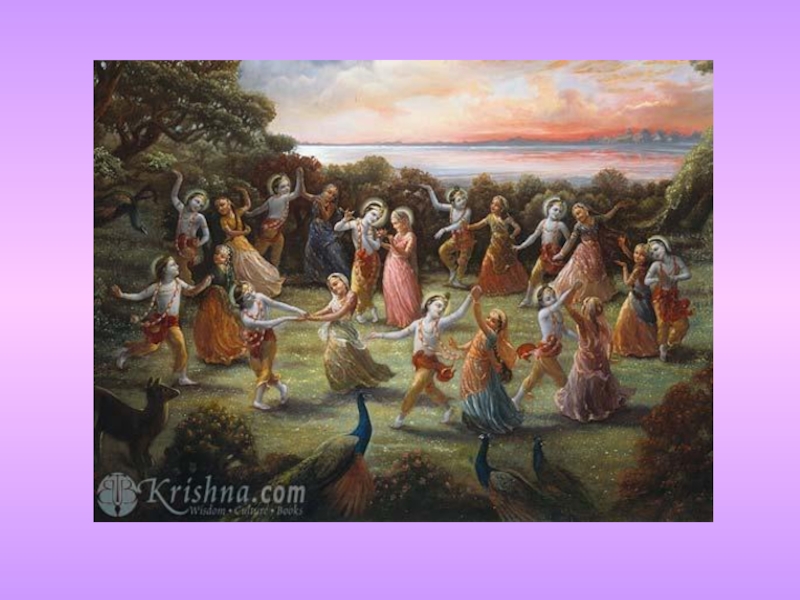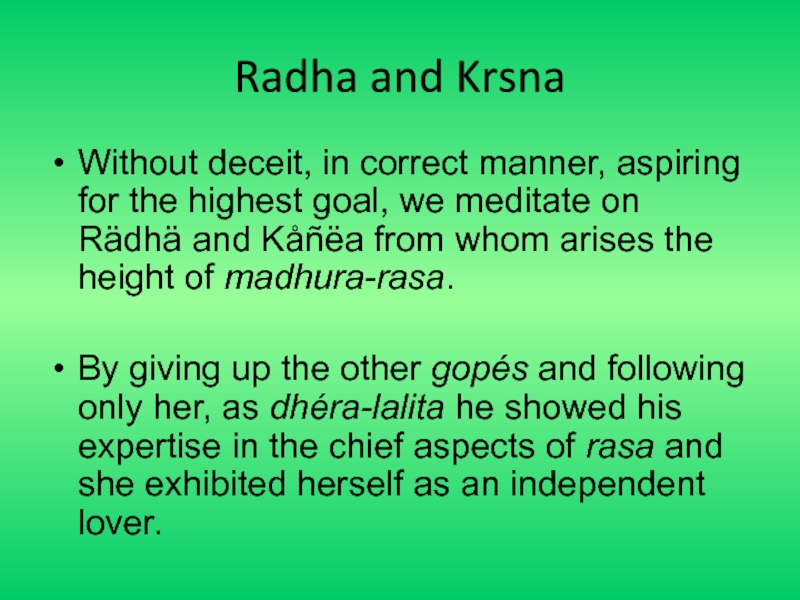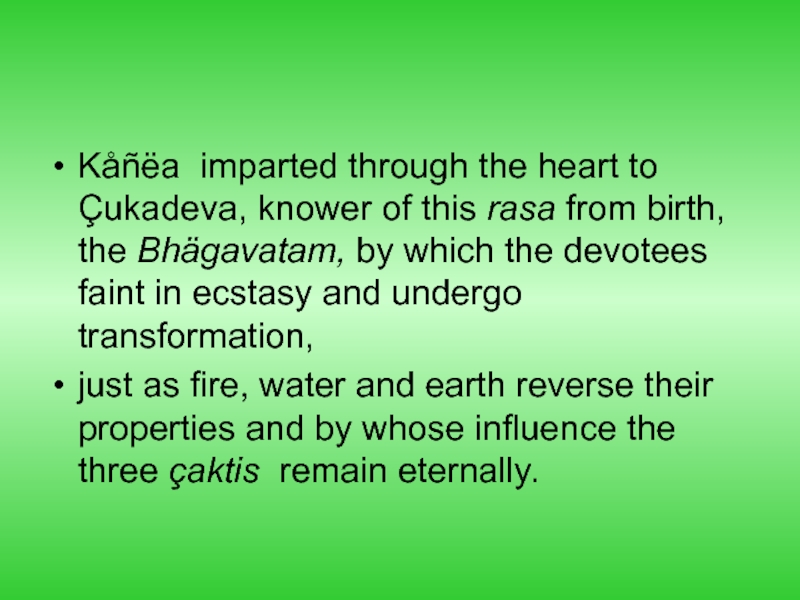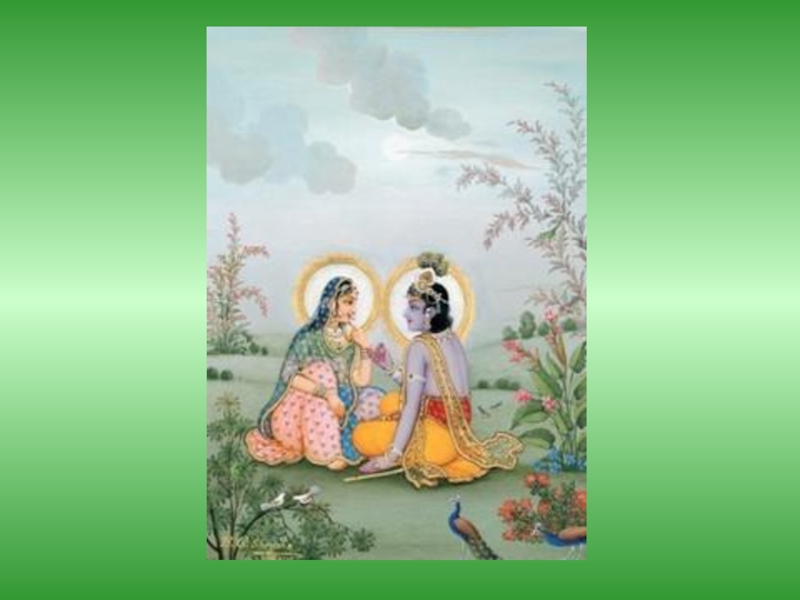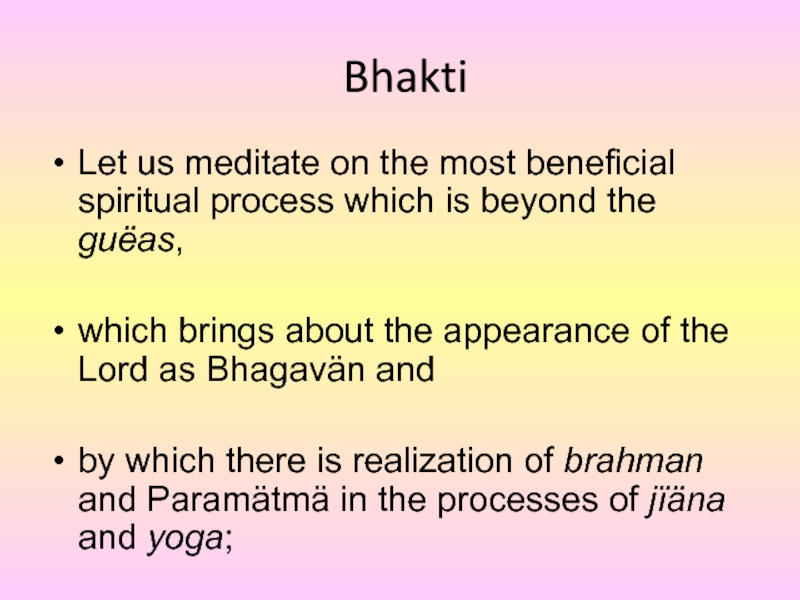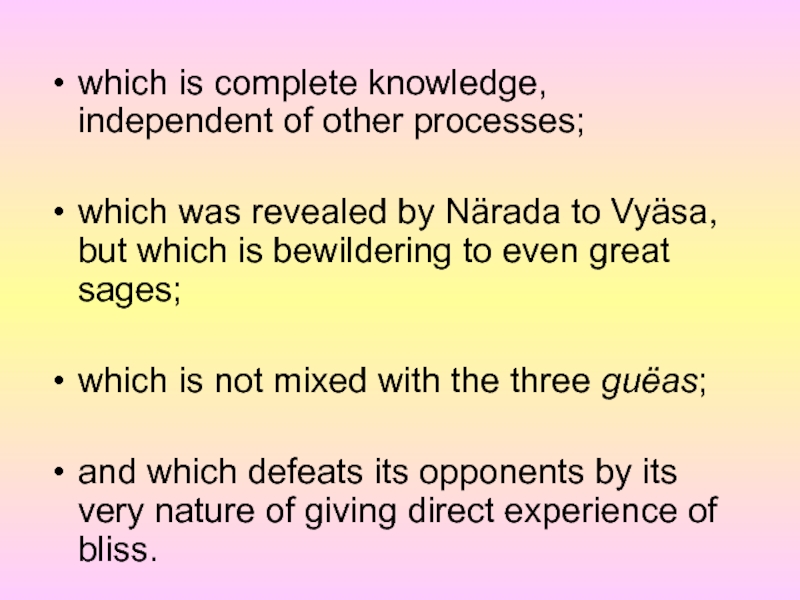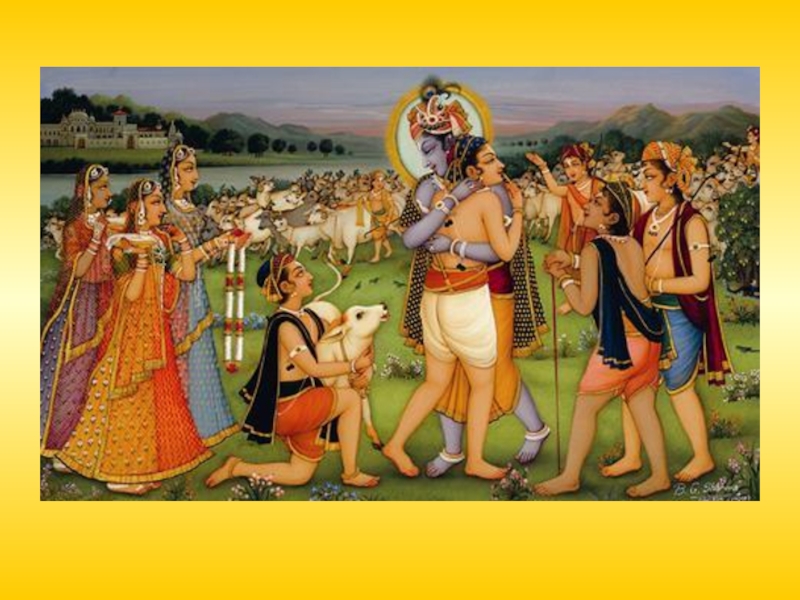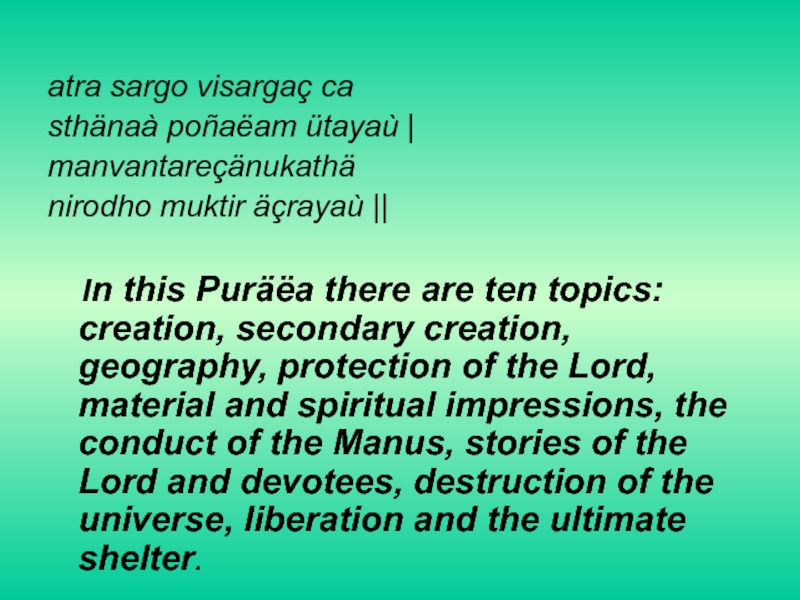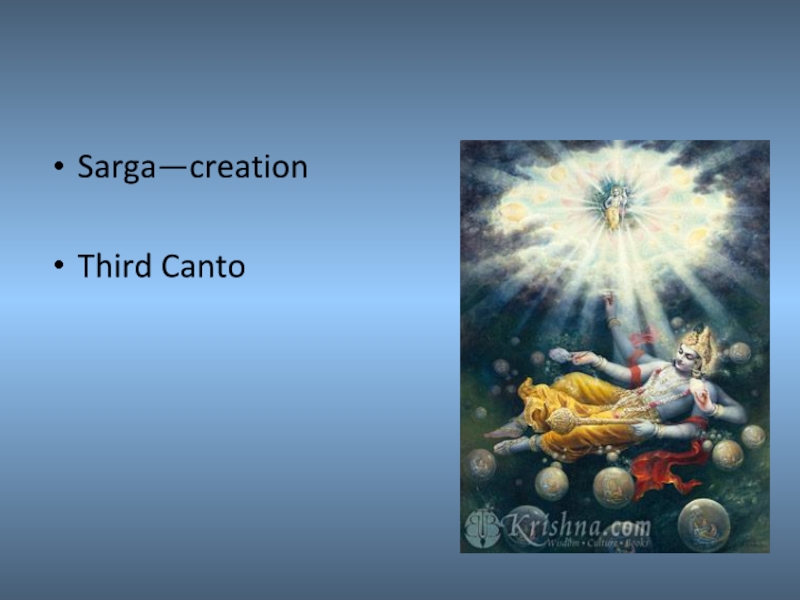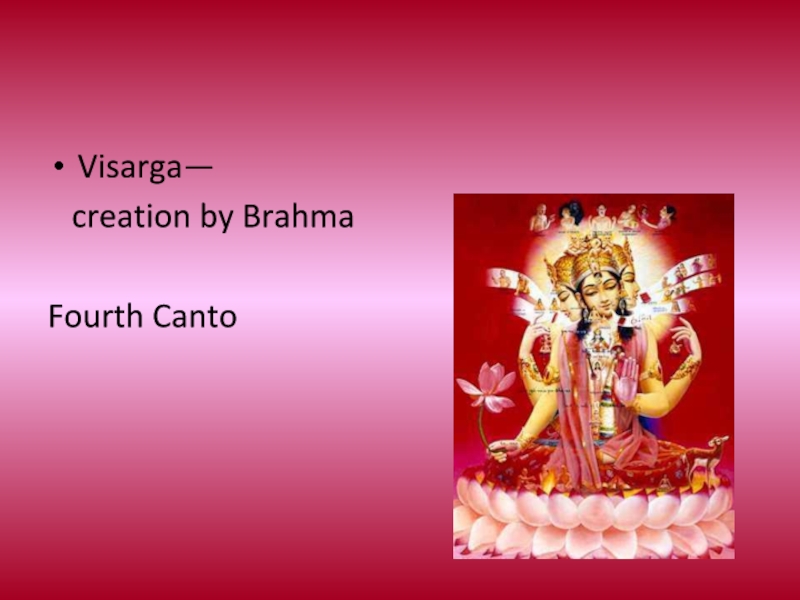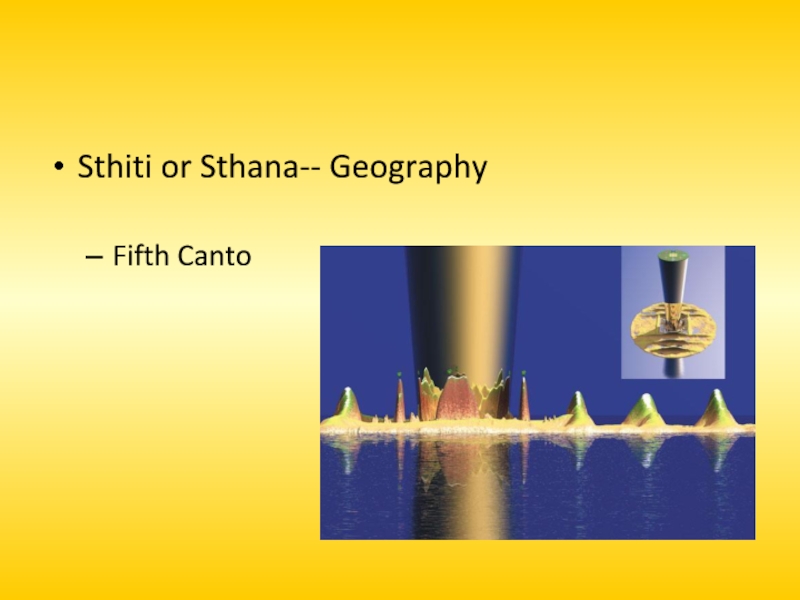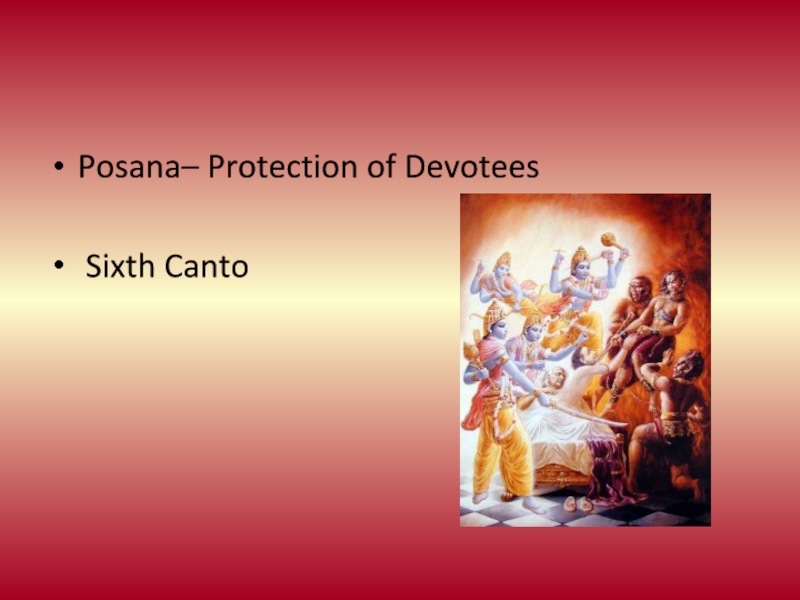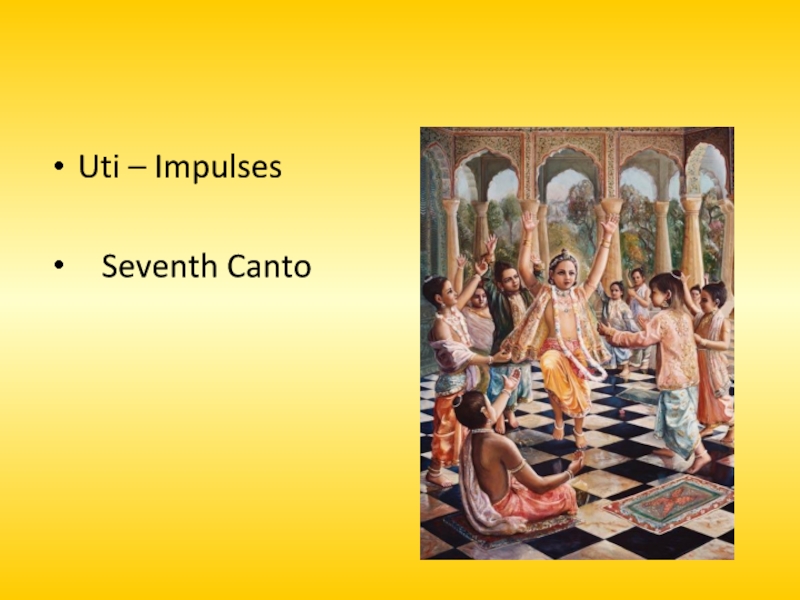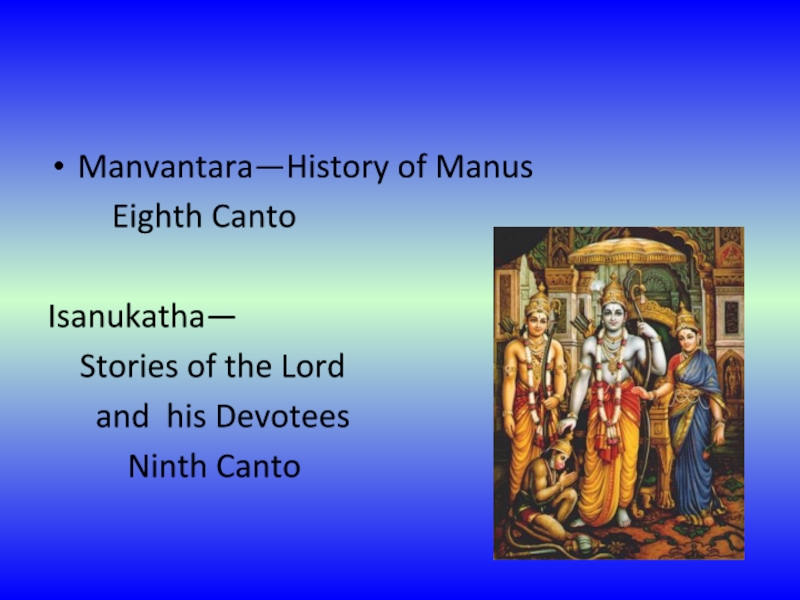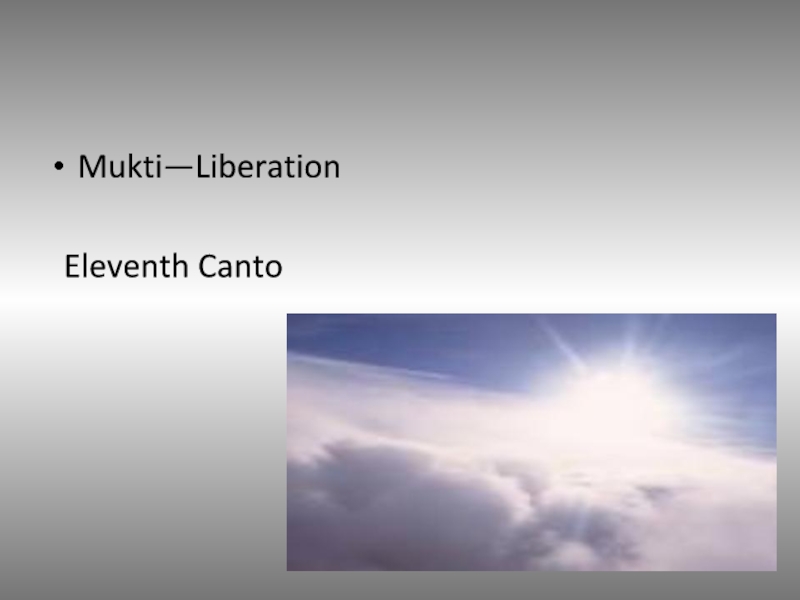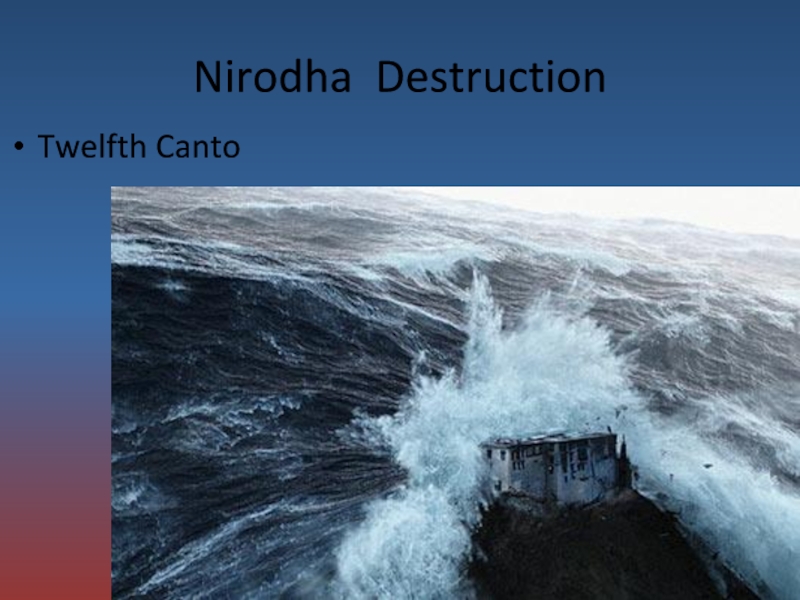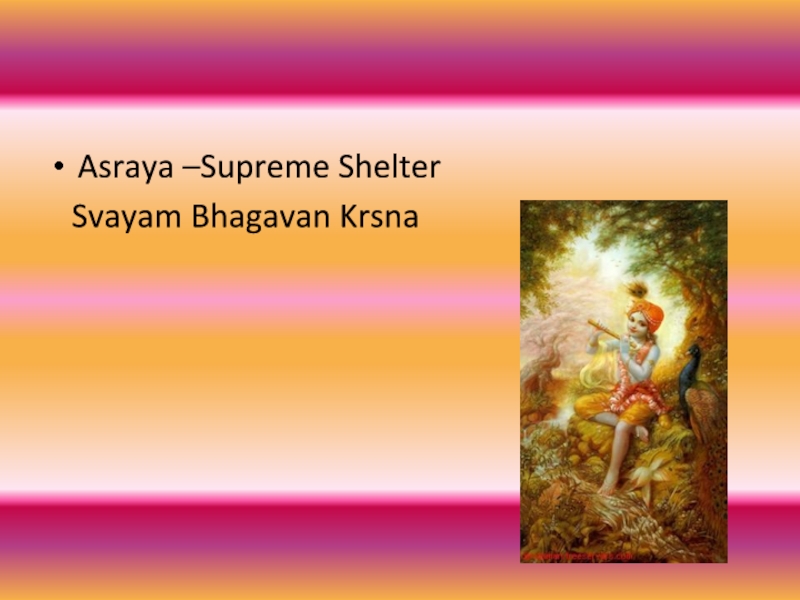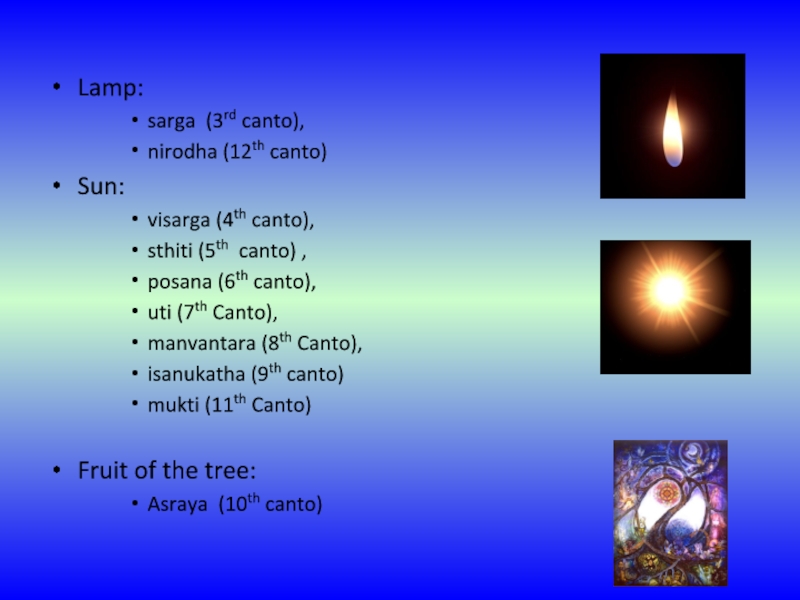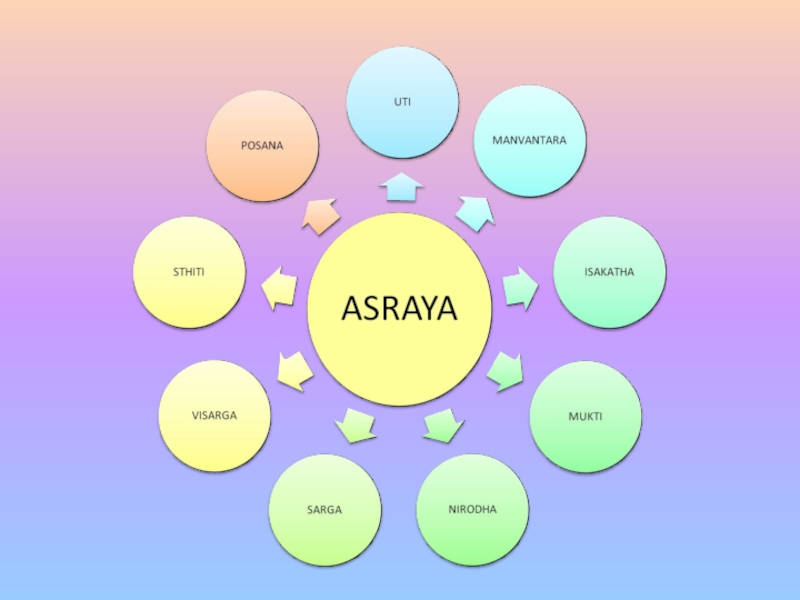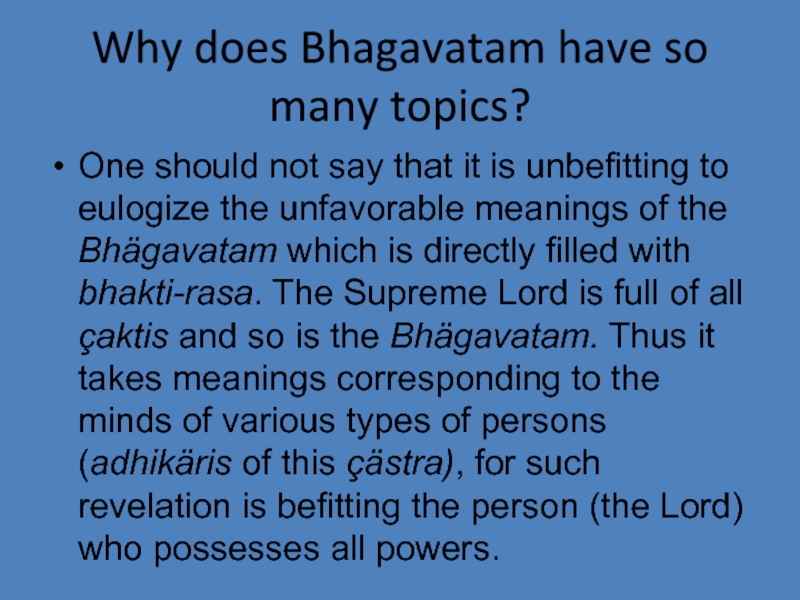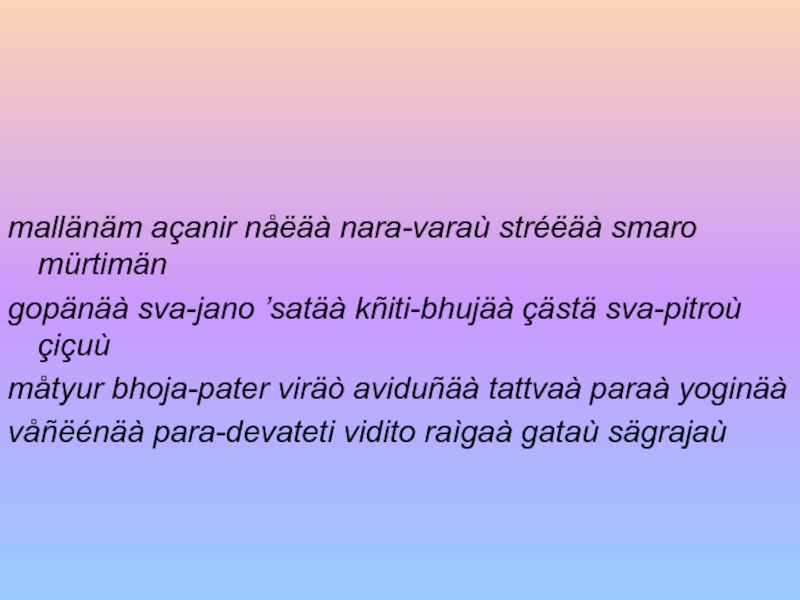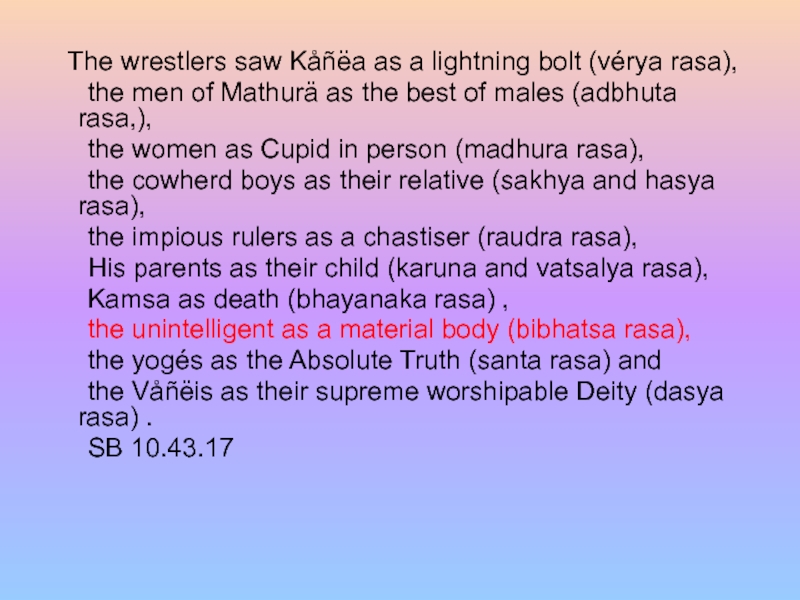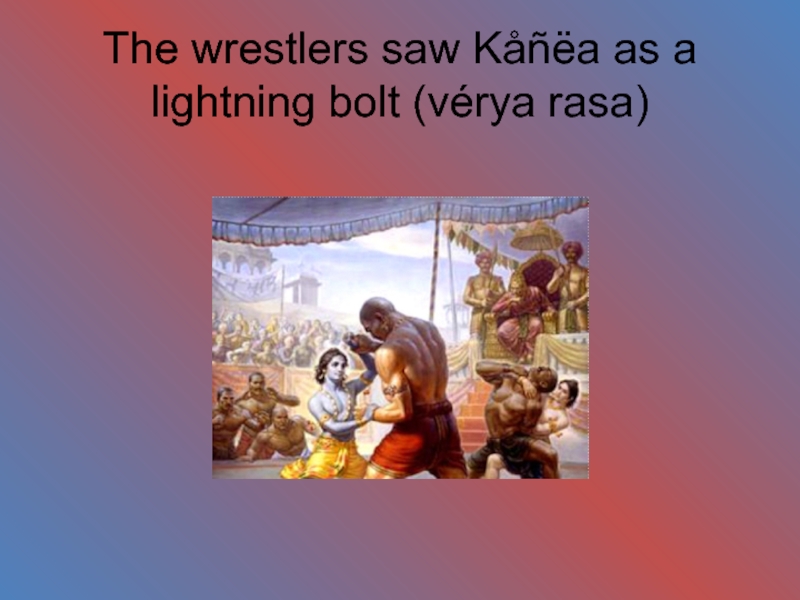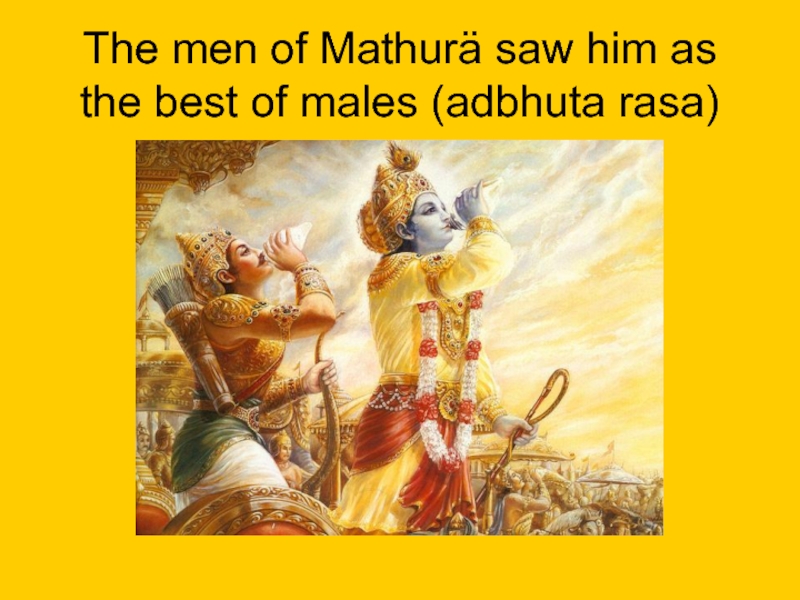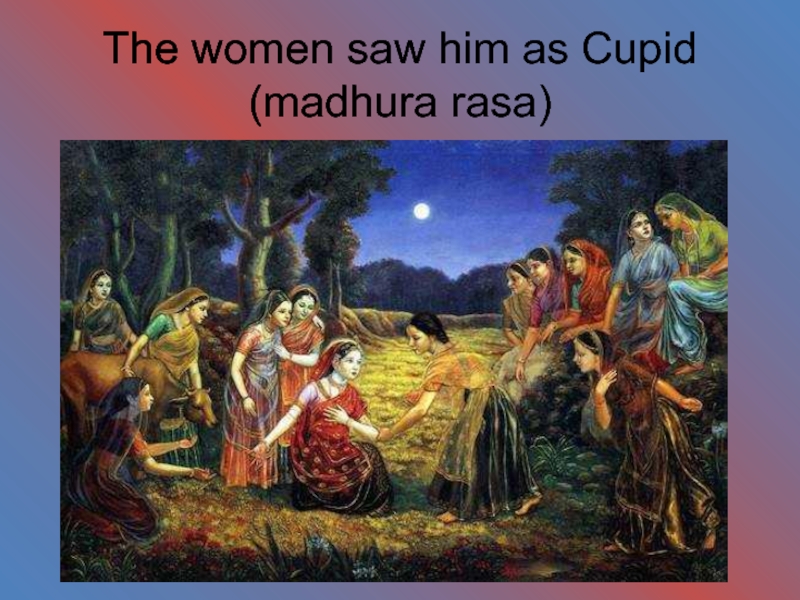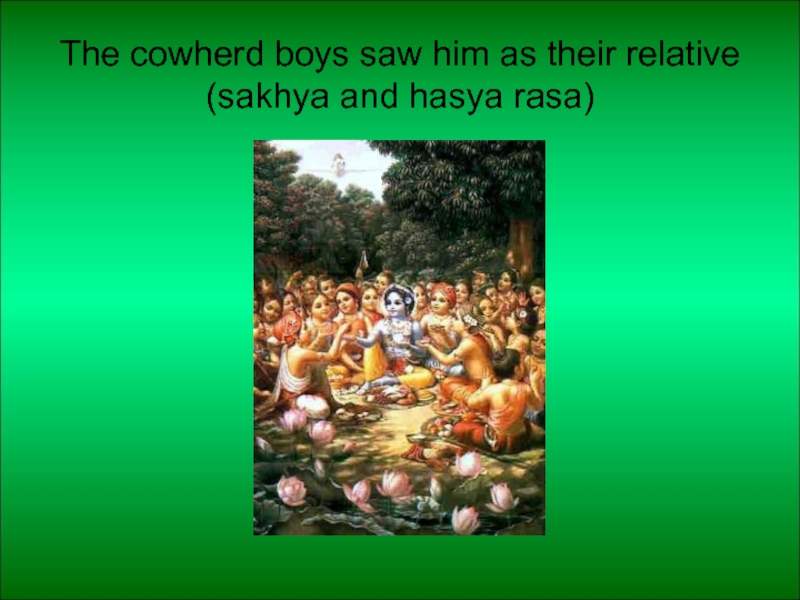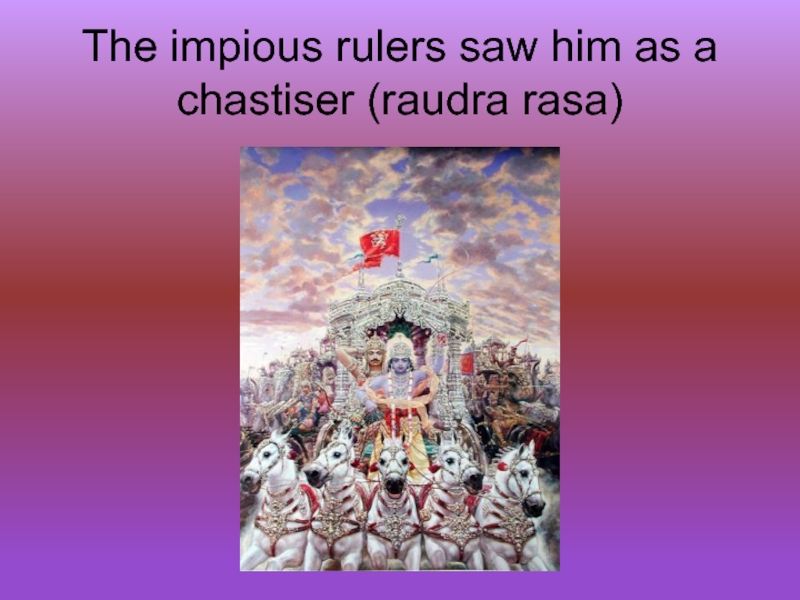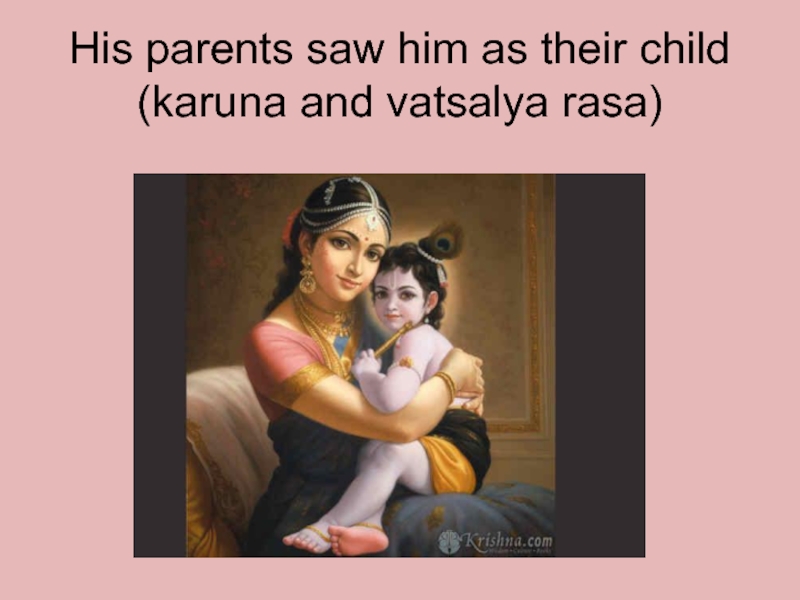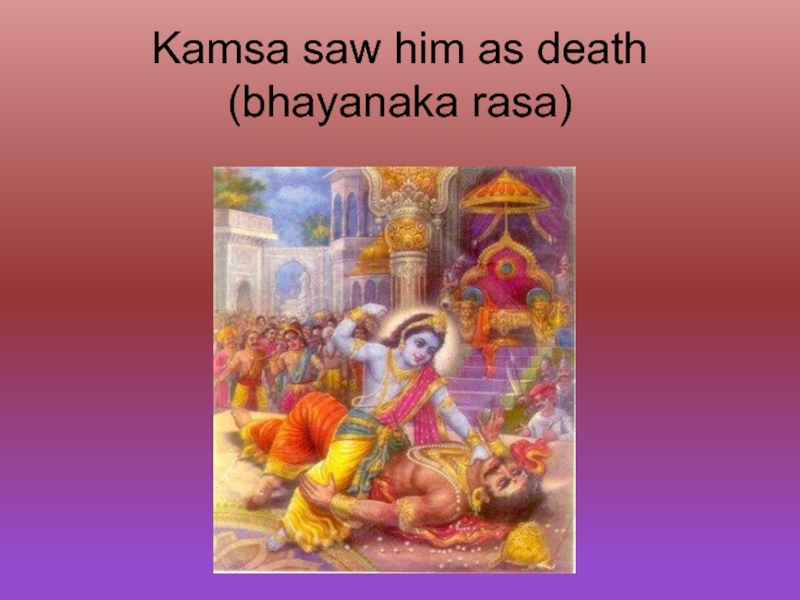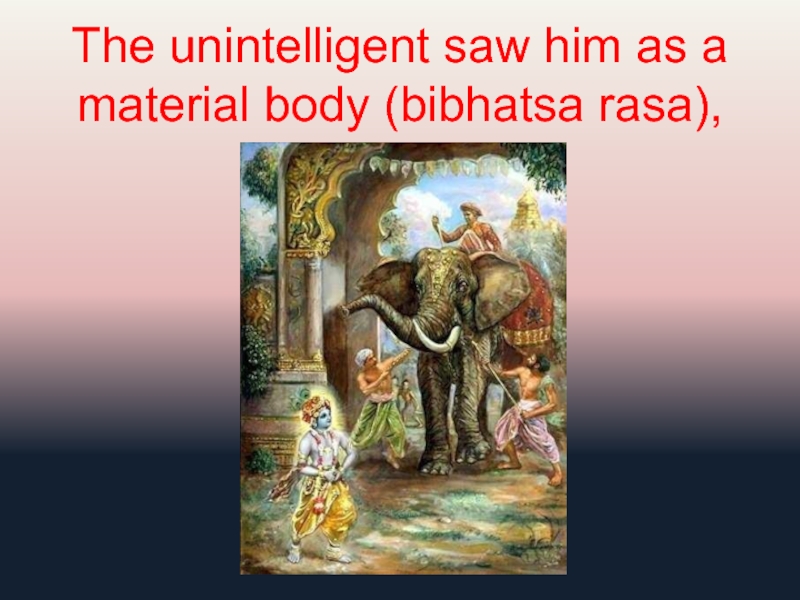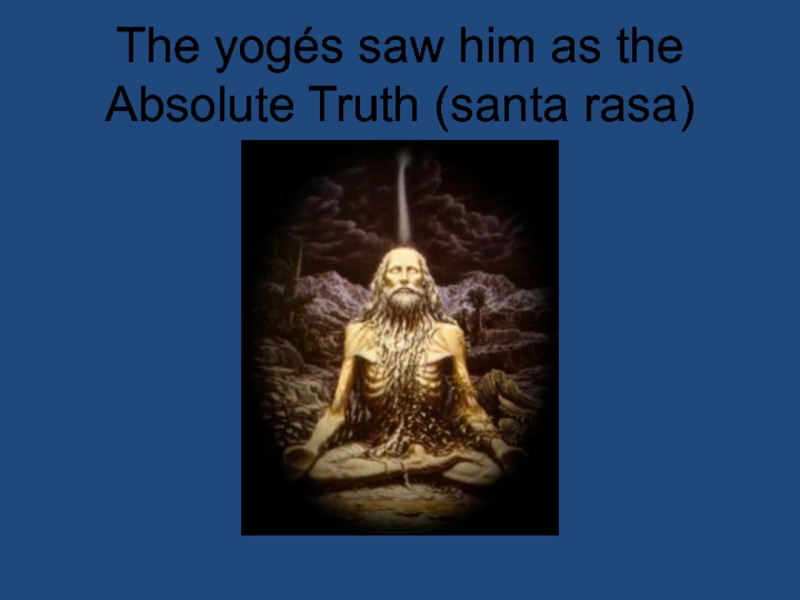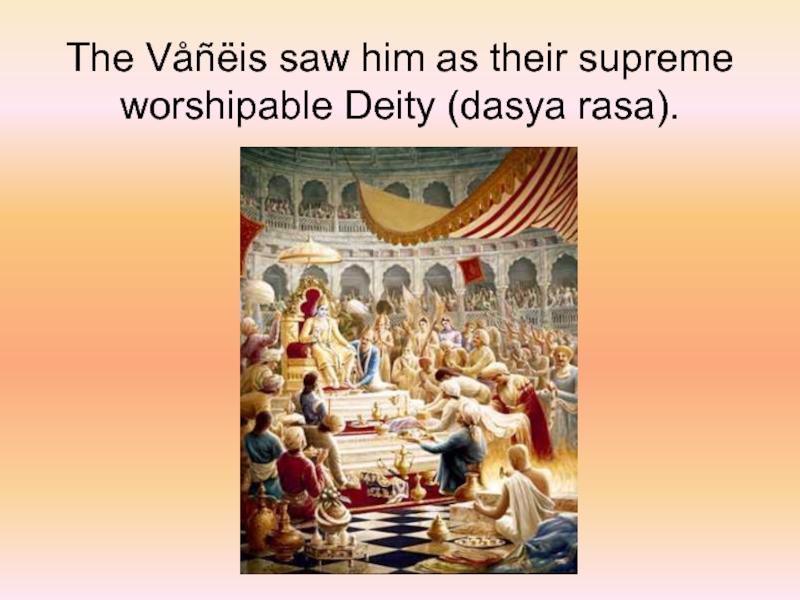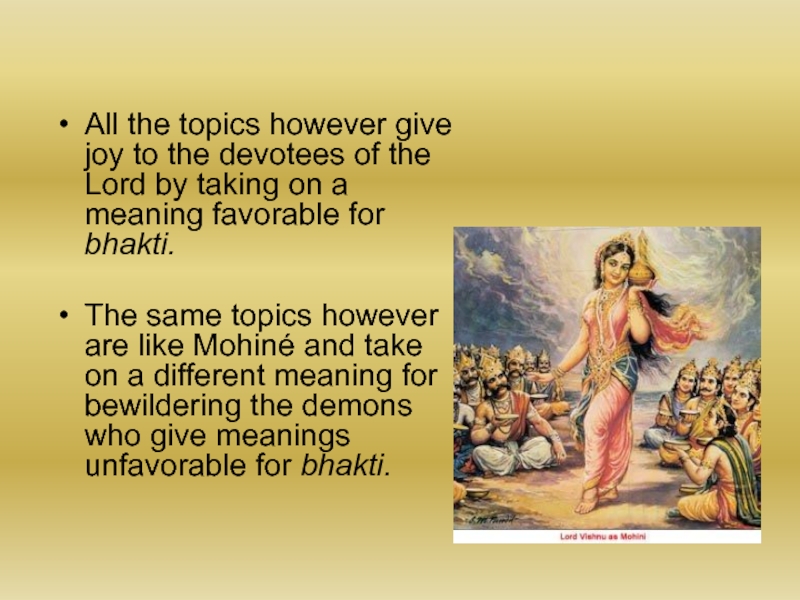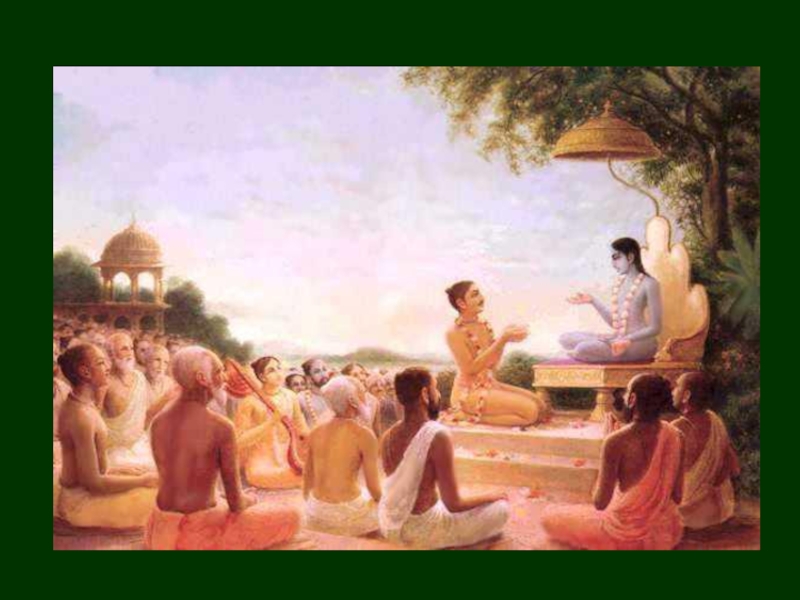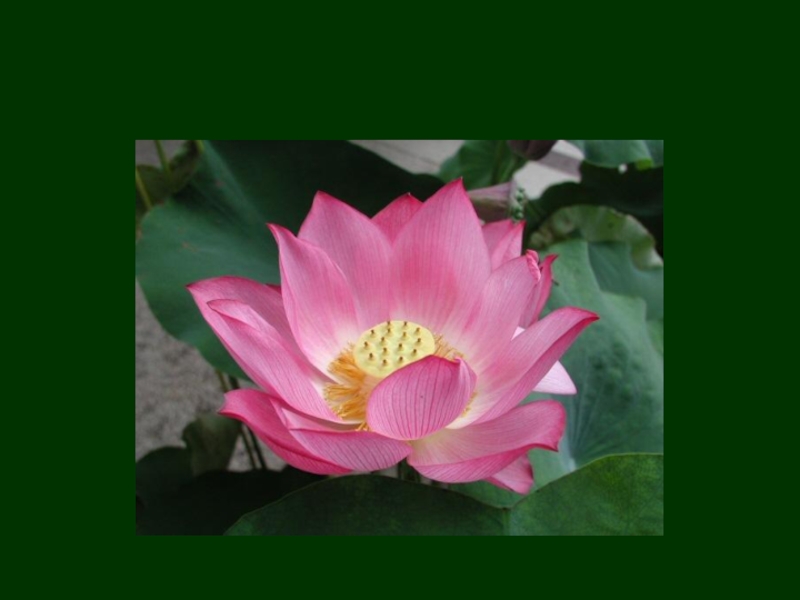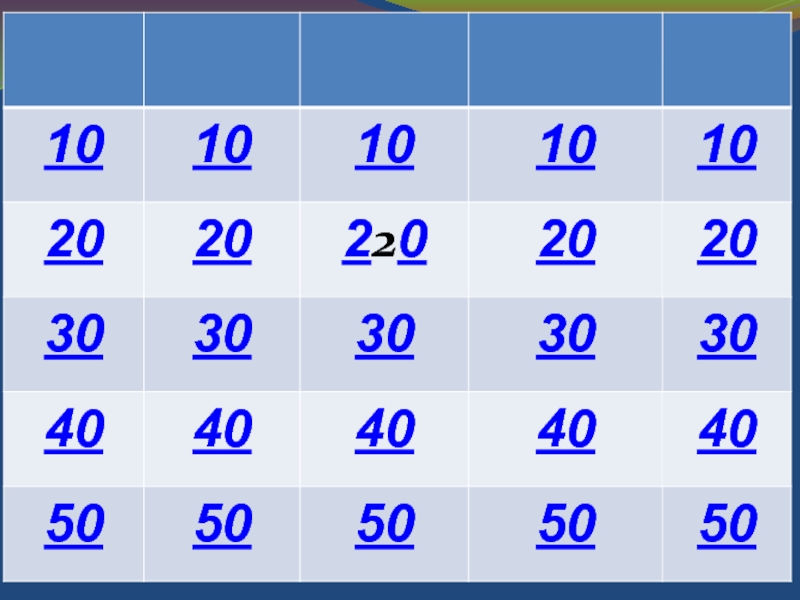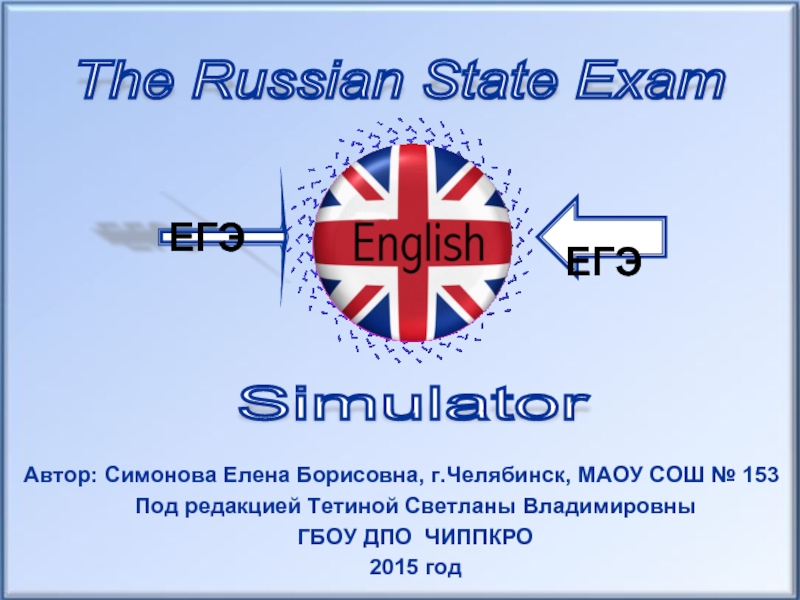- Главная
- Разное
- Дизайн
- Бизнес и предпринимательство
- Аналитика
- Образование
- Развлечения
- Красота и здоровье
- Финансы
- Государство
- Путешествия
- Спорт
- Недвижимость
- Армия
- Графика
- Культурология
- Еда и кулинария
- Лингвистика
- Английский язык
- Астрономия
- Алгебра
- Биология
- География
- Детские презентации
- Информатика
- История
- Литература
- Маркетинг
- Математика
- Медицина
- Менеджмент
- Музыка
- МХК
- Немецкий язык
- ОБЖ
- Обществознание
- Окружающий мир
- Педагогика
- Русский язык
- Технология
- Физика
- Философия
- Химия
- Шаблоны, картинки для презентаций
- Экология
- Экономика
- Юриспруденция
Bhagavatam king of scriptures презентация
Содержание
- 1. Bhagavatam king of scriptures
- 2. Scripture Brhad Aranyaka Upanisad says: asya
- 3. Vedas or Sruti Heard but not composed,
- 4. Purva Mimamsa
- 5. Aitareya Kausitaki Chandogya Kena Mundaka Mandukya
- 6. Bhagavad Gita
- 7. Visnu, Narada, Garuda, Padma, Varaha, Bhagavata
- 8. The glory of Visnu is greater
- 9. Smrti: Manu Yajnavalkya Atri Visnu Harita
- 10. Pancaratra 108 texts: Agastya-Samhita Aniruddha-Samhita Ahirbudhnya Samhita
- 11. Bhagavat Purana Final Purana Summary of Vedas
- 12. Mahabharata purnah so 'yam atisayah artho 'yam brahmasutranam bharatarthavinirnayah gayatribhasyarupo 'sau vedarthaparibrmhitah
- 13. This composition is exceedingly perfect. It
- 14. Bhagavatam is Avatara The Lord appears
- 15. kaccid aìga mahä-bhäga The Lord has
- 16. Perceptions of God
- 18. This popularly read scripture has qualities
- 19. 1. Krsna and Bhagavatam are Supreme
- 20. yaù svänubhävam akhila-çruti-säram ekam adhyätma-dépam
- 21. Bhagavatam and Krsna are like the Sun
- 22. kåñëe sva-dhämopagate dharma-jïänädibhiù saha kalau
- 23. 2. Bhagavatam and Krsna are like
- 24. Bhagavatam and Krsna are the Fruit of the Desire Tree
- 25. nigama-kalpa-taror galitaà phalaà çuka-mukhäd amåta-drava-saàyutam pibata
- 26. The Desire Tree for the Devotees
- 27. Mohini The devotees, being the rightful recipients,
- 28. Message for the Demons From beginning
- 29. vedä brahmätma-viñayäs tri-käëòa-viñayä ime parokña-vädä åñayaù
- 30. First Verse janmädy asya yato ’nvayäd itarataç
- 31. Supreme Brahman Let us
- 32. whose body is thought
- 34. Krsna Let us meditate on Kåñëa who
- 35. who, knowing the appearance of his
- 37. Madhurya Rasa Let us meditate on
- 38. in whom alone arises the three
- 40. Radha and Krsna Without deceit, in correct
- 41. Kåñëa imparted through the heart to
- 43. Bhakti Let us meditate on the
- 44. which is complete knowledge, independent of other
- 46. atra sargo visargaç ca sthänaà poñaëam
- 47. Sarga—creation Third Canto
- 48. Visarga— creation by Brahma Fourth Canto
- 49. Sthiti or Sthana-- Geography Fifth Canto
- 50. Posana– Protection of Devotees Sixth Canto
- 51. Uti – Impulses Seventh Canto
- 52. Manvantara—History of Manus
- 53. Mukti—Liberation Eleventh Canto
- 54. Nirodha Destruction Twelfth Canto
- 55. Asraya –Supreme Shelter Svayam Bhagavan Krsna
- 56. Lamp: sarga (3rd canto),
- 58. Why does Bhagavatam have so many topics?
- 59. mallänäm açanir nåëäà nara-varaù stréëäà smaro
- 60. The wrestlers saw Kåñëa
- 61. The wrestlers saw Kåñëa as a lightning bolt (vérya rasa)
- 62. The men of Mathurä saw him as the best of males (adbhuta rasa)
- 63. The women saw him as Cupid (madhura rasa)
- 64. The cowherd boys saw him as their relative (sakhya and hasya rasa)
- 65. The impious rulers saw him as a chastiser (raudra rasa)
- 66. His parents saw him as their child (karuna and vatsalya rasa)
- 67. Kamsa saw him as death (bhayanaka rasa)
- 68. The unintelligent saw him as a material body (bibhatsa rasa),
- 69. The yogés saw him as the Absolute Truth (santa rasa)
- 70. The Våñëis saw him as their supreme worshipable Deity (dasya rasa).
- 71. All the topics however give joy
Слайд 2Scripture
Brhad Aranyaka Upanisad says:
asya mahato bhutasya nihsvasitam etad rgvedo yajur vedah
sama vedatharvangirasa itihasah puranam vidya upanisadah slokah sutrany anuvyakhyanani sarvani nihsvasitani
From the Supreme Person’s breath came the four Vedas, the histories, the Puranas, the Upanisads, the verses and Sutras and all the anuvyakhyas (commentaries by acaryas).
From the Supreme Person’s breath came the four Vedas, the histories, the Puranas, the Upanisads, the verses and Sutras and all the anuvyakhyas (commentaries by acaryas).
Слайд 5
Aitareya
Kausitaki
Chandogya
Kena
Mundaka
Mandukya
Prasna
Gopal tapani
Black White
Taittiriya
Brhadaranyaka
Katha Isa
Svetasvatara
Katha Isa
Svetasvatara
Слайд 7
Visnu, Narada, Garuda, Padma, Varaha, Bhagavata
Brahma, Brahmanda, Brahma-vaivarta, Bhavisya, Markandeya, Vamana
Siva,
Linga, Skanda, Agni, Matsya, Kurma
Слайд 8
The glory of Visnu is greater in sattvika scripture; the glory
of Brahma is greater in rajasika scriptures; and that of Agni and Siva greater in tamasika scriptures.
Matsya Purana 190/13-14
Matsya Purana 190/13-14
Слайд 9Smrti:
Manu
Yajnavalkya
Atri
Visnu
Harita
Sukra
Angiras
Yama
Apasambha
Samvarta
Satyayana
Brhaspati
Parasara
Vyasa
Sankha
Likhita
Daksa
Gautama
Слайд 10Pancaratra
108 texts:
Agastya-Samhita
Aniruddha-Samhita
Ahirbudhnya Samhita
Brahma Samhita
Brihat-Brahma-Samhita
Isvara-Samhita
Kapinjala-Samhita
Gautama-Samhita
Citrasikhandi-Samhita
Jayakhya-Samhita
Jayottara-Samhita
Nalakubara-Samhita
Naradiya-Samhita
Слайд 11Bhagavat Purana Final Purana
Summary of Vedas
Veda
Upanisad
Mahabharata Purana Brahma Sutra
Bhagavatam
Mahabharata Purana Brahma Sutra
Bhagavatam
Слайд 12Mahabharata
purnah so 'yam atisayah
artho 'yam brahmasutranam bharatarthavinirnayah
gayatribhasyarupo 'sau vedarthaparibrmhitah
Слайд 13
This composition is exceedingly perfect. It contains the meaning of the
Brahmasutra and determines the meaning of the Mahabharata. It functions as a commentary on the Gayatri and fortifies the meaning of the Vedas.
Garuda Purana
Garuda Purana
Слайд 14Bhagavatam is Avatara
The Lord appears
as Matsya among the fish,
as Varäha among the animals,
as Haàsa among the birds,
as svayam bhagavän Kåñëa among humans,
and as Upendra among the devatäs,
Слайд 15
kaccid aìga mahä-bhäga
The Lord has now appeared as the crown jewel
of the scriptures, Çrémad-bhägavatam, among the Vedas.
Слайд 18
This popularly read scripture has qualities of the absolute entity brahman,
comparable to
a lamp.
a lamp.
Слайд 19
1. Krsna and Bhagavatam are Supreme Brahman,
like a lamp, giving
deliverance from misery through general understanding of the Lord as adhyätmä
Слайд 20
yaù svänubhävam akhila-çruti-säram ekam
adhyätma-dépam atititérñatäà tamo ’ndham
saàsäriëäà karuëayäha puräëa-guhyaà
taà vyäsa-sünum
upayämi guruà munénäm
I surrender to the son of Vyäsa, the incomparable guru of all the sages, who mercifully spoke the Puräëa full of hidden meanings, the essence of all the scriptures, the essence of hearing, for all the people of this world, even in the future; who spoke the Bhägavatam, which revealed the excellence of rasa to Çukadeva, and which is the revealer of ätmä for those desiring to cross dense ignorance with ease. SB 1.2.3
I surrender to the son of Vyäsa, the incomparable guru of all the sages, who mercifully spoke the Puräëa full of hidden meanings, the essence of all the scriptures, the essence of hearing, for all the people of this world, even in the future; who spoke the Bhägavatam, which revealed the excellence of rasa to Çukadeva, and which is the revealer of ätmä for those desiring to cross dense ignorance with ease. SB 1.2.3
Слайд 22
kåñëe sva-dhämopagate
dharma-jïänädibhiù saha
kalau nañöa-dåçäm eña
puräëärko ’dhunoditaù
Though Kåñëa, departing Dvärakä,
arrived at Prabhäsa, and then disappeared along with his six opulences, this Puräëa, another form of the sun, has now risen in Kali-yuga for those who have lost their knowledge. SB 1.3.43
Слайд 23
2. Bhagavatam and Krsna are like the sun, more powerful than
a lamp,
destroying misconceptions propagated by the demons and bringing joy to the devotees.
destroying misconceptions propagated by the demons and bringing joy to the devotees.
Слайд 25
nigama-kalpa-taror galitaà phalaà
çuka-mukhäd amåta-drava-saàyutam
pibata bhägavataà rasam älayaà
muhur aho rasikä bhuvi bhävukäù
O
knowers of rasa! O fortunate souls! Constantly drink from the mouth of Çukadeva the Bhägavatam, the fruit of the tree of the Vedas, which has dropped from the tree to this earth, which is immortal and liquid, which is the essence of sweetness and which includes all types of liberation.
Слайд 27Mohini
The devotees, being the rightful recipients, are considered to be like
the devatäs, since they receive the nectar in the form of relishing the rarest taste of these five meanings.
The Bhägavatam is considered to be like Mohiné, serving out these different meanings of Bhägavatam to the devotees.
The Bhägavatam is considered to be like Mohiné, serving out these different meanings of Bhägavatam to the devotees.
Слайд 28Message for the Demons
From beginning to end, the Çrémad-Bhägavatam is full
of the Lord's pastimes which give bliss to the devotees, endowed with a sense of renunciation. This Bhägavatam is the essence of all Vedänta philosophy because its subject matter is one Brahman, a substance with no duality. The main goal of the work is merging. SB 12.13.11-12
Слайд 29
vedä brahmätma-viñayäs
tri-käëòa-viñayä ime
parokña-vädä åñayaù
parokñaà mama ca priyam
The Vedas, divided into three
divisions, ultimately reveal worship of the Lord. The Vedic seers and mantras, however, say this indirectly, since they know that I prefer this indirect method. || 11.21.35 ||
Слайд 30First Verse
janmädy asya yato ’nvayäd itarataç cärtheñv abhijïaù svaräö
tene brahma hådä
ya ädi-kavaye muhyanti yat sürayaù |
tejo-väri-mådäà yathä vinimayo yatra tri-sargo ’måñä
dhämnä svena sadä nirasta-kuhakaà satyaà paraà dhémahi
tejo-väri-mådäà yathä vinimayo yatra tri-sargo ’måñä
dhämnä svena sadä nirasta-kuhakaà satyaà paraà dhémahi
Five Meanings
Isvara Krsna Madhura Rasa Radha-krsna Bhakti
Слайд 31Supreme Brahman
Let us meditate upon the Absolute Truth, Kåñëa,
who is the cause of creation, maintenance and destruction of this universe, as the material and efficient cause, since he is the only knower of all objects and the only independent being;
who revealed the Vedas to Brahmä within his mind;
who is difficult to understand even for the learned;
who revealed the Vedas to Brahmä within his mind;
who is difficult to understand even for the learned;
Слайд 32
whose body is thought to be made of matter
due to illusion just as one mistakes fire, water and earth for each other;
who negates all false arguments regarding his existence
by possessing a transcendental, inconceivable form,
and by the strength of devotees’ experiencing him though his svarüpa-çakti.
who negates all false arguments regarding his existence
by possessing a transcendental, inconceivable form,
and by the strength of devotees’ experiencing him though his svarüpa-çakti.
Слайд 34Krsna
Let us meditate on Kåñëa who is known as Satya, who
— through his abode Mathurä and by revelation of his form to his devotees — destroys ignorance concerning himself;
whose body, though appearing to be material to the demons, is not temporary at all;
who, after appearing in Vasudeva’s house knowing how to cheat Kaàsa, went to Nanda’s house,
whose body, though appearing to be material to the demons, is not temporary at all;
who, after appearing in Vasudeva’s house knowing how to cheat Kaàsa, went to Nanda’s house,
Слайд 35
who, knowing the appearance of his devotee’s prema in Vraja, remained
there because of his own people, though he is in all cases independent;
and who revealed that the cows and calves were actually the supreme brahman to Brahmä by his will — which bewilders even persons such as Närada.
and who revealed that the cows and calves were actually the supreme brahman to Brahmä by his will — which bewilders even persons such as Närada.
Слайд 37 Madhurya Rasa
Let us meditate on Kåñëa, from whom arises madhura-rasa
through meeting and separation;
who, as the hero, most skilful in everything related to rasa, is beyond the material realm;
who conveyed to Bharata Muni the same madhura-rasa, about which other poets are bewildered;
who, as the hero, most skilful in everything related to rasa, is beyond the material realm;
who conveyed to Bharata Muni the same madhura-rasa, about which other poets are bewildered;
Слайд 38
in whom alone arises the three types of literary meaning, in
extraordinary form;
and who defeats the withered arguers by the extraordinary influence of the experience of madhura-rasa.
and who defeats the withered arguers by the extraordinary influence of the experience of madhura-rasa.
Слайд 40Radha and Krsna
Without deceit, in correct manner, aspiring for the highest
goal, we meditate on Rädhä and Kåñëa from whom arises the height of madhura-rasa.
By giving up the other gopés and following only her, as dhéra-lalita he showed his expertise in the chief aspects of rasa and she exhibited herself as an independent lover.
By giving up the other gopés and following only her, as dhéra-lalita he showed his expertise in the chief aspects of rasa and she exhibited herself as an independent lover.
Слайд 41
Kåñëa imparted through the heart to Çukadeva, knower of this rasa
from birth, the Bhägavatam, by which the devotees faint in ecstasy and undergo transformation,
just as fire, water and earth reverse their properties and by whose influence the three çaktis remain eternally.
just as fire, water and earth reverse their properties and by whose influence the three çaktis remain eternally.
Слайд 43 Bhakti
Let us meditate on the most beneficial spiritual process which
is beyond the guëas,
which brings about the appearance of the Lord as Bhagavän and
by which there is realization of brahman and Paramätmä in the processes of jïäna and yoga;
which brings about the appearance of the Lord as Bhagavän and
by which there is realization of brahman and Paramätmä in the processes of jïäna and yoga;
Слайд 44which is complete knowledge, independent of other processes;
which was revealed
by Närada to Vyäsa, but which is bewildering to even great sages;
which is not mixed with the three guëas;
and which defeats its opponents by its very nature of giving direct experience of bliss.
which is not mixed with the three guëas;
and which defeats its opponents by its very nature of giving direct experience of bliss.
Слайд 46atra sargo visargaç ca
sthänaà poñaëam ütayaù |
manvantareçänukathä
nirodho muktir äçrayaù
||
In this Puräëa there are ten topics: creation, secondary creation, geography, protection of the Lord, material and spiritual impressions, the conduct of the Manus, stories of the Lord and devotees, destruction of the universe, liberation and the ultimate shelter.
In this Puräëa there are ten topics: creation, secondary creation, geography, protection of the Lord, material and spiritual impressions, the conduct of the Manus, stories of the Lord and devotees, destruction of the universe, liberation and the ultimate shelter.
Слайд 52
Manvantara—History of Manus
Eighth Canto
Isanukatha—
Stories
of the Lord
and his Devotees
Ninth Canto
and his Devotees
Ninth Canto
Слайд 56
Lamp:
sarga (3rd canto),
nirodha (12th canto)
Sun:
visarga (4th canto),
sthiti
(5th canto) ,
posana (6th canto),
uti (7th Canto),
manvantara (8th Canto),
isanukatha (9th canto)
mukti (11th Canto)
Fruit of the tree:
Asraya (10th canto)
posana (6th canto),
uti (7th Canto),
manvantara (8th Canto),
isanukatha (9th canto)
mukti (11th Canto)
Fruit of the tree:
Asraya (10th canto)
Слайд 58Why does Bhagavatam have so many topics?
One should not say that
it is unbefitting to eulogize the unfavorable meanings of the Bhägavatam which is directly filled with bhakti-rasa. The Supreme Lord is full of all çaktis and so is the Bhägavatam. Thus it takes meanings corresponding to the minds of various types of persons (adhikäris of this çästra), for such revelation is befitting the person (the Lord) who possesses all powers.
Слайд 59
mallänäm açanir nåëäà nara-varaù stréëäà smaro mürtimän
gopänäà sva-jano ’satäà kñiti-bhujäà çästä
sva-pitroù çiçuù
måtyur bhoja-pater viräò aviduñäà tattvaà paraà yoginäà
våñëénäà para-devateti vidito raìgaà gataù sägrajaù
måtyur bhoja-pater viräò aviduñäà tattvaà paraà yoginäà
våñëénäà para-devateti vidito raìgaà gataù sägrajaù
Слайд 60
The wrestlers saw Kåñëa as a lightning bolt (vérya
rasa),
the men of Mathurä as the best of males (adbhuta rasa,),
the women as Cupid in person (madhura rasa),
the cowherd boys as their relative (sakhya and hasya rasa),
the impious rulers as a chastiser (raudra rasa),
His parents as their child (karuna and vatsalya rasa),
Kamsa as death (bhayanaka rasa) ,
the unintelligent as a material body (bibhatsa rasa),
the yogés as the Absolute Truth (santa rasa) and
the Våñëis as their supreme worshipable Deity (dasya rasa) .
SB 10.43.17
the men of Mathurä as the best of males (adbhuta rasa,),
the women as Cupid in person (madhura rasa),
the cowherd boys as their relative (sakhya and hasya rasa),
the impious rulers as a chastiser (raudra rasa),
His parents as their child (karuna and vatsalya rasa),
Kamsa as death (bhayanaka rasa) ,
the unintelligent as a material body (bibhatsa rasa),
the yogés as the Absolute Truth (santa rasa) and
the Våñëis as their supreme worshipable Deity (dasya rasa) .
SB 10.43.17
Слайд 71
All the topics however give joy to the devotees of the
Lord by taking on a meaning favorable for bhakti.
The same topics however are like Mohiné and take on a different meaning for bewildering the demons who give meanings unfavorable for bhakti.
The same topics however are like Mohiné and take on a different meaning for bewildering the demons who give meanings unfavorable for bhakti.

